Widex A S CDRM COM-DEX Remote MIC User Manual part 1
Widex A/S COM-DEX Remote MIC part 1
Contents
- 1. User manual-part 1
- 2. User manual-part 2
User manual-part 1
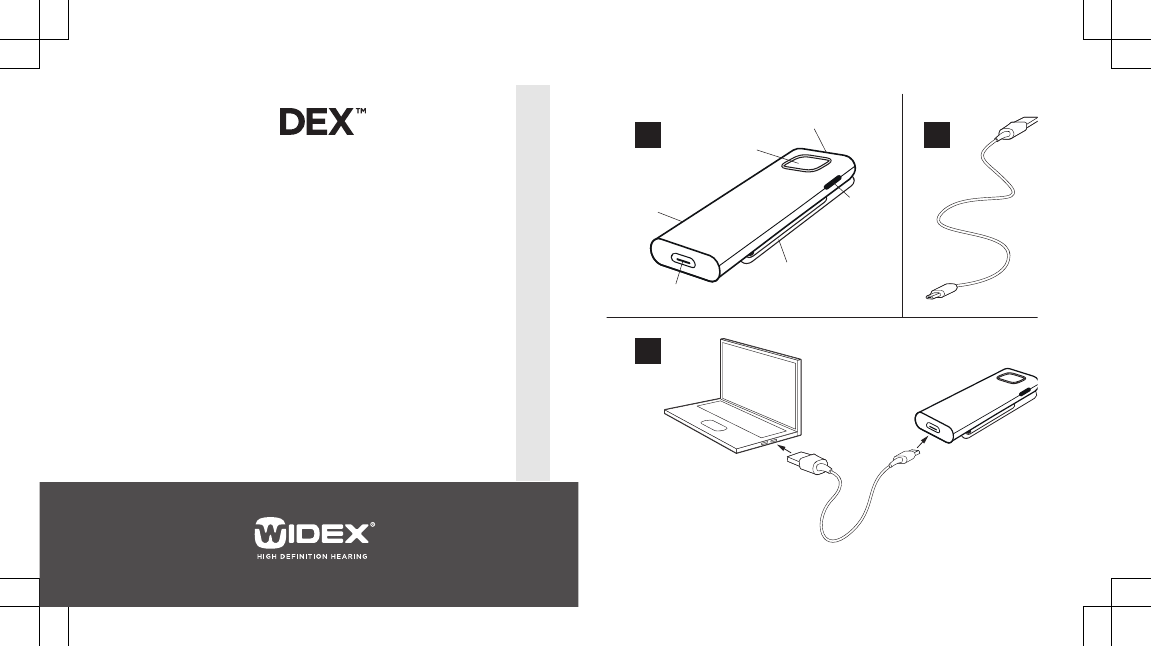
Accessories
1.4
1.3
1.1
1.2
1.6
1.5
1
3
2
EN
DE
FR
ES
DK
IT
JP
US

CONTENTS
DESCRIPTION OF DEVICE........................................................................8
Intended use.....................................................................................................8
Accessories.......................................................................................................9
CHARGING YOUR DEVICE......................................................................10
TURNING THE DEVICE ON AND OFF....................................................... 11
PAIRING YOUR DEVICE..........................................................................12
USING YOUR DEVICE............................................................................. 13
Sound adjustment..........................................................................................13
Visual indicators..............................................................................................13
Maintenance....................................................................................................14
TROUBLESHOOTING..............................................................................15
Warnings.........................................................................................................16
REGULATORY INFORMATION................................................................17
Directive 1999/5/EC.......................................................................................17
SYMBOLS.............................................................................................. 18
GERÄTEBESCHREIBUNG.......................................................................20
Bestimmungsgemäßer Gebrauch...............................................................20
Zubehör..........................................................................................................20
AUFLADEN DES GERÄTS........................................................................21
EIN- UND AUSSCHALTEN DES GERÄTS.................................................22
2

KOPPLUNG DES GERÄTS.......................................................................23
BENUTZUNG DES GERÄTS....................................................................24
Lautstärkeanpassung....................................................................................24
Visuelle Anzeigen..........................................................................................24
Aufbewahrung und allgemeine Handhabung........................................... 25
FEHLERSUCHE......................................................................................26
Warnhinweise................................................................................................ 27
INFORMATIONEN ZUR REGELKONFORMITÄT.......................................28
Richtlinie 1999/5/EG..................................................................................... 28
SYMBOLE..............................................................................................29
DESCRIPTION DE L'APPAREIL................................................................31
Usage auquel l'appareil est destiné..............................................................31
Les accessoires................................................................................................31
CHARGEMENT DE VOTRE APPAREIL.....................................................32
ALLUMER ET ÉTEINDRE L'APPAREIL.....................................................33
APPAIRAGE DE VOTRE APPAREIL........................................................ 34
UTILISATION DE VOTRE APPAREIL....................................................... 35
Le réglage du son.......................................................................................... 35
Indicateurs visuels.........................................................................................35
L’entretien...................................................................................................... 36
PROBLÈMES ET SOLUTIONS..................................................................37
3

Avertissements..............................................................................................38
MENTIONS RÉGLEMENTAIRES.............................................................. 39
Directive 1999/5/CE......................................................................................39
LES SYMBOLES.....................................................................................40
DESCRIPCIÓN DEL DISPOSITIVO...........................................................42
Utilización prevista........................................................................................42
Accesorios...................................................................................................... 43
CÓMO CARGAR EL DISPOSTIVO........................................................... 44
CÓMO ENCENCER Y APAGAR EL DISPOSITIVO..................................... 45
CÓMO EMPAREJAR EL DISPOSTIVO..................................................... 46
CÓMO UTILIZAR EL DISPOSTIVO...........................................................47
El ajuste del sonido........................................................................................47
Indicadores visuales......................................................................................47
Mantenimiento...............................................................................................48
SOLUCIÓN DE PROBLEMAS.................................................................. 49
ADVERTENCIAS.............................................................................................50
INFORMACIÓN DE REGLAMENTACIÓN.................................................. 51
Directiva 1999/5/EC.......................................................................................51
SÍMBOLOS.............................................................................................52
BESKRIVELSE AF ENHEDEN..................................................................54
Påtænkt anvendelse..................................................................................... 54
4

Tilbehør...........................................................................................................55
OPLADNING AF ENHEDEN....................................................................56
TÆND OG SLUK FOR ENHEDEN.............................................................57
PARRING AF ENHEDEN.........................................................................58
BRUG AF ENHEDEN.............................................................................. 59
Lydregulering.................................................................................................59
Visuelle indikatorer........................................................................................59
Vedligeholdelse.............................................................................................60
FEJLFINDING.........................................................................................61
Advarsler........................................................................................................ 62
REGULATORISK INFORMATION............................................................ 63
Direktiv 1999/5/EF........................................................................................ 63
SYMBOLER........................................................................................... 64
DESCRIZIONE DEL DISPOSITIVO...........................................................66
Uso previsto...................................................................................................66
Accessori.........................................................................................................66
RICARICA DEL DISPOSITIVO................................................................. 67
ACCENSIONE E SPEGNIMENTO DEL DISPOSITIVO.................................68
ACCOPPIAMENTO DEL DISPOSITIVO.................................................... 69
USO DEL DISPOSITIVO..........................................................................70
Regolazione del suono..................................................................................70
5

Indicatori visivi...............................................................................................70
Manutenzione..................................................................................................71
RISOLUZIONE DI PROBLEMI..................................................................72
Avvertenze..................................................................................................... 73
INFORMAZIONI NORMATIVE.................................................................74
Direttiva 1999/5/CE.......................................................................................74
SIMBOLI................................................................................................75
装置の説明....................................................................................... 77
使用目的..................................................................................................... 77
付属品.......................................................................................................... 77
装置の充電.......................................................................................78
装置の電源のオン/オフ............................................................... 79
装置のペアリング......................................................................... 80
装置の使用方法...............................................................................81
音の調節......................................................................................................81
ライトインジケータ.............................................................................81
メンテナンス...........................................................................................82
トラブルシューティング.............................................................83
警告...............................................................................................................84
規制情報........................................................................................... 85
指令1999/5/EC.............................................................................................85
6

記号....................................................................................................86
DESCRIPTION OF DEVICE......................................................................88
Intended use.................................................................................................. 88
Accessories.....................................................................................................89
CHARGING YOUR DEVICE.....................................................................90
TURNING THE DEVICE ON AND OFF...................................................... 91
PAIRING YOUR DEVICE.........................................................................92
USING YOUR DEVICE............................................................................ 93
Sound adjustment.........................................................................................93
Visual indicators.............................................................................................93
Maintenance...................................................................................................94
TROUBLESHOOTING.............................................................................95
Warnings........................................................................................................96
REGULATORY INFORMATION............................................................... 97
Directive 1999/5/EC.......................................................................................111
FCC and IC statements................................................................................. 112
SYMBOLS............................................................................................. 115
7

DESCRIPTION OF DEVICE
(See illustration 1)
1.1 Streaming button
1.2 Power button
1.3 LED
1.4 Microphone and LED
1.5 Charging port
1.6 Clip
Intended use
The COM-DEX Remote Mic is a microphone with an integrated radio
intended for transmitting sound to a COM-DEX connected to the user’s
hearing aid(s). The aim is to improve the hearing aid user’s ability to hear
speech in difficult listening situations.
For optimal connectivity the device and the COM-DEX must be within sight
of each other.
NOTE
Your Remote Mic is only intended to be used with a COM-DEX and it will not
work with any other device.
8

Accessories
(See illustration 2)
USB cable
9

CHARGING YOUR DEVICE
(See illustration 3)
Connect the USB cable to your device and the power supply. It takes
approximately 3 hours to charge your device.
NOTE
Before you can use the device, you must disconnect the USB cable.
Battery life: 8 hours streaming, 8 days standby.
10

TURNING THE DEVICE ON AND OFF
To turn on your device:
●Press the power button and keep it pressed for 3 seconds.
To turn off your device:
●Press the power button and keep it pressed for 3 seconds.
The device turns off automatically if it has not been streaming sound for
more than 30 minutes.
11

PAIRING YOUR DEVICE
Pairing your device to your COM-DEX
To pair your device to your COM-DEX for the first time, follow these steps:
1. Make sure that your COM-DEX is in pairing mode. Consult the COM-DEX
user guide.
2. Turn on your device. The first time you do this, the device will be set in
pairing mode and it will automatically connect to your COM-DEX.
NOTE
Once you have paired your device to your COM-DEX, it will remain so and
will connect automatically if your COM-DEX is on.
Pairing your device with another COM-DEX:
1. Turn on your device.
2. Reset your device to factory settings by pushing both buttons for 5
seconds. The device will be set to pairing mode.
3. Follow the pairing procedure described above.
NOTE
Your Remote Mic is only intended to be used with a COM-DEX and it will not
work with any other device.
12

USING YOUR DEVICE
(See illustration 4)
Place the device on the shirt collar of the person you'd like to hear.
Turn on the device.
To start and stop streaming, simply push the streaming button on your
Remote Mic. While streaming, the LED will show a green light.
Sound adjustment
The sound that is streamed from the device to COM-DEX can be adjusted in
3 levels. Simply push the power button on the side of the device and the
sound level will be altered in a three step circle (highest level – lowest level
– back to normal level).
Visual indicators
(See illustration 5)
Your device has two LEDs that flash with different colours. The purpose of
these colours is to inform you of which mode your device is in at any given
time.
●Constant red light on both LEDs: The device is charging.
●Constant green light on both LEDs: The device is fully charged.
●Flashing blue-red-blue-red light on both LEDS: The device is ready to
be paired.
●Flashing blue light on the top LED: The device is on, but there is no
connection to the paired COM-DEX.
13

●Flashing green light on the top LED: The device is on and connected to
the COM-DEX, but it is not streaming.
●Constant green light on the top LED: The device is on and streaming.
●Occasionally flashing red light on both LEDs: The battery is low.
Maintenance
●Clean the device with a damp cloth. Do not use any liquids or chemicals.
●Do not immerse in liquids.
●When the device is not in use keep it in a dry location out of reach of
children and pets.
●Never try to open or repair the device yourself. This may only be done
by authorised technicians.
14

TROUBLESHOOTING
Problem Possible cause Solution
The device does not
work 1. Remote Mic battery
low
2. COM-DEX battery
low
3. Out of range
1. Charge Remote Mic
battery
2. Charge your COM-
DEX
3. Move into range
No sound 1. Not paired to COM-
DEX
2. COM-DEX is out of
the hearing aids'
range
3. Hearing aid
batteries are low
1. Repeat the pairing
process
2. Move into range
3. Change the hearing
aids' batteries
If the problem persists, contact your hearing care professional.
15

Warnings
Do not use the device in mines or other areas with explosive gases.
Do not expose to extreme temperatures or high humidity.
When the device is connected via micro USB cable to external mains-
operated equipment such as a charger, PC, audio source or similar, this
equipment must comply with IEC 60065, IEC 60950-1, IEC 60601-1 or
equivalent safety standards.
16
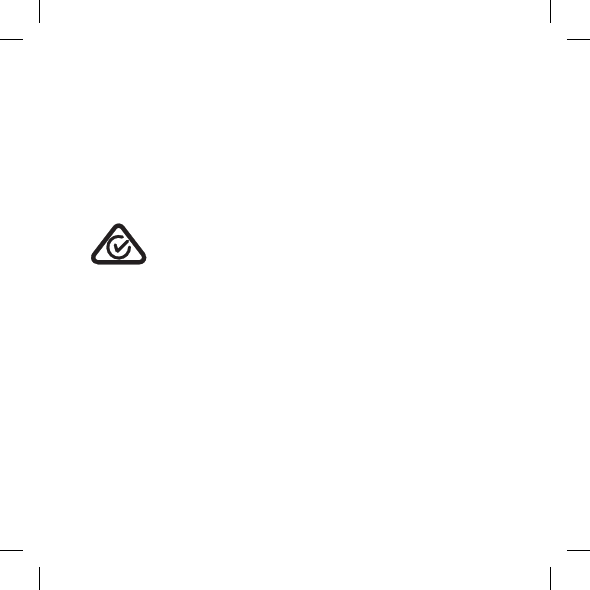
REGULATORY INFORMATION
Directive 1999/5/EC
Hereby, Widex A/S declares that this COM-DEX Remote Mic is in compliance
with the essential requirements and other relevant provisions of Directive
1999/5/EC.
A copy of the Declaration of Conformity can be found at:
www.widex.com/doc.
N26346
Information regarding disposal
Do not dispose of hearing aids, hearing aid accessories and batteries with
ordinary household waste.
Hearing aids, batteries and hearing aid accessories should be disposed of at
sites intended for waste electrical and electronic equipment, or given to
your hearing care professional for safe disposal.
17
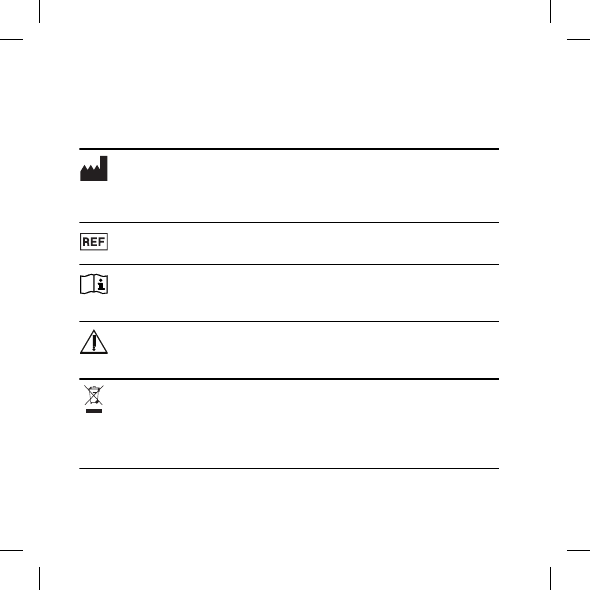
SYMBOLS
Symbols commonly used by Widex A/S in medical device labelling
(labels/IFU/etc.)
Symbol Title/Description
Manufacturer
The product is produced by the manufacturer whose name and address are
stated next to the symbol. If appropriate, the date of manufacture may also
be stated.
Catalogue number
The product’s catalogue (item) number.
Consult instructions for use
The user instructions contain important cautionary information
(warnings/precautions) and must be read before using the product.
Warning
Text marked with a warning symbol must be read before using the
product.
WEEE mark
“Not for general waste”. When a product is to be discarded, it must be
sent to a designated collection point for recycling and recovering to
prevent the risk of harm to the environment or human health as a
result of the presence of hazardous substances.
18
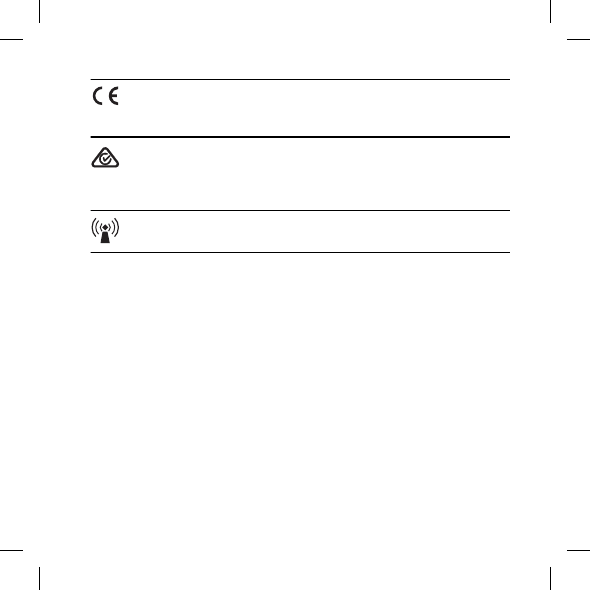
Symbol Title/Description
CE mark
The product is in conformity with the requirements set out in European
CE marking directives.
RCM mark
The product complies with electrical safety, EMC and radio spectrum
regulatory requirements for products supplied to the Australian or New
Zealand market.
Interference
Electromagnetic interference may occur in the vicinity of the product.
19

GERÄTEBESCHREIBUNG
(Siehe Abb. 1)
1.1 Streaming-Taste
1.2 Ein/Aus-Taste
1.3 LED
1.4 Mikrofon und LED
1.5 Ladebuchse
1.6 Clip
Bestimmungsgemäßer Gebrauch
Bei dem Gerät handelt es sich um ein Mikrofon mit integriertem Sender, das
dazu dient, Schall zu einem mit den Hörsystemen des Trägers verbundenen
COM-DEX zu senden. Das Ziel ist die Verbesserung der Fähigkeit des
Hörgeräteträgers, Sprache in schwierigen Hörsituationen zu verstehen.
Für optimale Verbindungsqualität müssen sich das Gerät und das COM-DEX
in Sichtweite voneinander befinden.
Zubehör
(Siehe Abb. 2)
USB-Kabel
20

AUFLADEN DES GERÄTS
(Siehe Abb. 3)
Schließen Sie das USB-Kabel zwischen Ihrem Gerät und dem Ladegerät an.
Das Aufladen Ihres Geräts dauert etwa 3 Stunden.
HINWEIS
Bevor Sie das Gerät verwenden können, müssen Sie das USB-Kabel trennen.
Akkulaufzeit: 8 Stunden Streaming, 8 Tage Standby
21

EIN- UND AUSSCHALTEN DES GERÄTS
Einschalten:
●Halten Sie die Ein/Aus-Taste 3 Sekunden lang gedrückt.
Ausschalten:
●Halten Sie die Ein/Aus-Taste 3 Sekunden lang gedrückt.
Das Gerät schaltet sich automatisch aus, wenn für länger als 30 Minuten kein
Streaming erfolgte.
22

KOPPLUNG DES GERÄTS
Kopplung Ihres Geräts mit Ihrem COM-DEX
Gehen Sie bei der erstmaligen Kopplung Ihres Geräts mit Ihrem COM-DEX
folgendermaßen vor:
1. Achten Sie darauf, dass Ihr COM-DEX im Kopplungsmodus ist. Schauen
Sie ggf. in der COM-DEX Bedienungsanleitung nach.
2. Schalten Sie Ihr Gerät ein. Das Gerät schaltet beim erstmaligen
Einschalten in den Kopplungsmodus und verbindet sich automatisch mit
Ihrem COM-DEX.
HINWEIS
Nachdem Sie Ihr Gerät mit Ihrem COM-DEX gekoppelt haben, erhält es die
Kopplung bei und verbindet sich automatisch, wenn Ihr COM-DEX
eingeschaltet ist.
Kopplung Ihres Geräts mit einem anderen COM-DEX:
1. Schalten Sie Ihr Gerät ein.
2. Setzen Sie Ihr Gerät auf die Werkseinstellungen zurück, indem Sie beide
Tasten 5 Sekunden lang drücken. Das Gerät schaltet in den
Kopplungsmodus.
3. Befolgen Sie das oben beschriebene Kopplungsverfahren.
HINWEIS
Ihr Remote Mic ist nur für den Betrieb mit einem COM-DEX vorgesehen und
funktioniert mit anderen Geräten nicht.
23

BENUTZUNG DES GERÄTS
(Siehe Abb. 4)
Befestigen Sie das Gerät am Hemdkragen der Person, die Sie hören
möchten.
Schalten Sie das Gerät ein.
Zum Start/Stopp des Streamings drücken Sie einfach die Streaming-Taste
an Ihrem Gerät. Beim Streaming leuchtet die LED grün.
Lautstärkeanpassung
Sie können die Streaming-Lautstärke zwischen Ihrem Gerät und Ihrem
COM-DEX in 3 Stufen anpassen. Drücken Sie hierzu einfach kurz die Ein/
Aus-Taste seitlich an Ihrem Gerät.
Visuelle Anzeigen
(Siehe Abb. 5)
Ihr Gerät hat zwei in unterschiedlichen Farben leuchtende LED. Diese Farben
zeigen Ihnen jederzeit die Betriebsart Ihres Geräts an.
●Beide LED konstant rot: Das Gerät wird aufgeladen.
●Beide LED konstant grün: Das Gerät ist vollständig geladen.
●Beide LED blinken blau-rot-blau-rot: Das Gerät ist bereit für die
Kopplung.
●Obere LED blinkt blau: Das Gerät ist eingeschaltet, hat aber keine
Verbindung mit dem gekoppelten COM-DEX.
24

●Obere LED blinkt grün: Das Gerät ist eingeschaltet und mit dem COM-
DEX verbunden, das Streaming funktioniert aber nicht.
●Obere LED konstant grün: Das Gerät ist eingeschaltet, das Streaming
funktioniert.
●Gelegentlich blinken beide LED rot: Akku schwach
Aufbewahrung und allgemeine Handhabung
●Reinigen Sie das Gerät mit einem feuchten Tuch. Verwenden Sie
keinerlei Flüssigkeiten oder Chemikalien.
●Bringen Sie das Gerät nicht mit Wasser oder anderen Flüssigkeiten in
Berührung.
●Wenn Sie das Gerät nicht benutzen, bewahren Sie es an einem
trockenen Ort und für Kinder und Haustiere unzugänglich auf.
●Versuchen Sie nie, das Gerät selbst zu öffnen bzw. zu reparieren,
sondern bringen Sie es zu Ihrem Hörgeräte-Akustiker.
25

FEHLERSUCHE
Problem Mögliche Ursache Lösung
Das Gerät funktioniert
nicht 1. Geräteakku schwach
2. COM-DEX-Akku
schwach
3. Außer Reichweite
1. Geräteakku
aufladen
2. COM-DEX aufladen
3. In Reichweite
bringen
Kein Ton 1. Nicht mit COM-DEX
gekoppelt
2. COM-DEX ist
außerhalb der
Reichweite der
Hörsysteme
3. Hörsystem-
Batterien schwach
1. Kopplungsprozess
wiederholen
2. In Reichweite
bringen
3. Hörsystem-
Batterien
austauschen
Besteht das Problem weiterhin, suchen Sie Ihren Hörgeräte-Akustiker auf.
26

Warnhinweise
Aufgrund der einschlägigen Vorschriften darf das Gerät nicht in
explosionsgefährdeten Räumen betrieben werden (z. B. in Minen oder an
anderen Orten mit explosiblen Gasen).
Setzen Sie das Gerät keinen extremen Temperaturen oder starker
Feuchtigkeit aus.
Wenn das Gerät über ein Mikro-USB-Kabel mit einem netzbetriebenen
externen Gerät (z. B. Ladegerät, PC, Audiogerät o. Ä.) verbunden wird,
muss dieses Gerät die Sicherheitsvorschriften der Normen IEC 60065, IEC
60950-1, IEC 60601-1 oder vergleichbarer Normen erfüllen.
27

INFORMATIONEN ZUR REGELKONFORMITÄT
Richtlinie 1999/5/EG
Hiermit erklärt Widex A/S, dass sich dieses COM-DEX Remote Mic in
Übereinstimmung mit den grundlegenden Anforderungen und den anderen
relevanten Vorschriften der Richtlinie 1999/5/EG befindet.
Eine Kopie der Konformitätserklärung finden Sie auf:
www.widex.com/doc.
N26346
Informationen zur Entsorgung
Werfen Sie Hörsysteme, Zubehör und Batterien nicht in den Hausmüll.
Hörsysteme, Zubehör und Batterien müssen zur sicheren Entsorgung bei
Sammelstellen für Elektro- und Elektronik-Altgeräte oder bei Ihrem
Hörgeräte-Akustiker abgegeben werden.
28
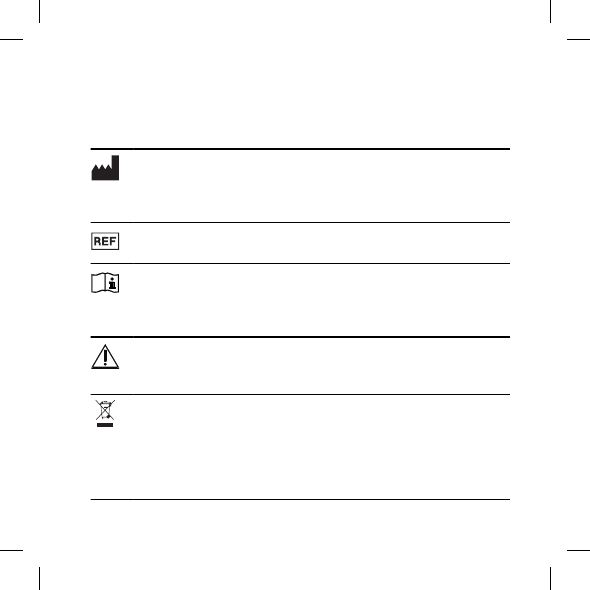
SYMBOLE
Gemeinhin von Widex A/S für die Kennzeichnung medizinischer Geräte (auf
Etiketten, in Bedienungsanleitungen etc.) verwendete Symbole:
Symbol Bezeichnung/Beschreibung
Hersteller
Der Name und die Adresse des Herstellers des Produktes stehen neben
dem Symbol. Falls erforderlich kann auch das Herstellungsdatum
angegeben sein.
Bestellnummer
Die Bestellnummer (Artikelnummer) des Produktes.
Bedienungsanleitung beachten
Die Bedienungsanleitung enthält wichtige Warnhinweise und
Informationen zu Vorsichtsmaßnahmen und muss vor Gebrauch des
Produktes gelesen werden.
Warnung
Hinweise mit diesem Symbol müssen vor Gebrauch des Produktes
gelesen werden.
EEAG-Kennzeichnung
„Nicht im Hausmüll entsorgen.“
Wenn ein Produkt entsorgt werden soll, muss es zu einer
ausgewiesenen Sammel- und Recyclingstelle gebracht werden, damit
Umwelt und Gesundheit nicht durch gefährliche Stoffe gefährdet
werden.
29
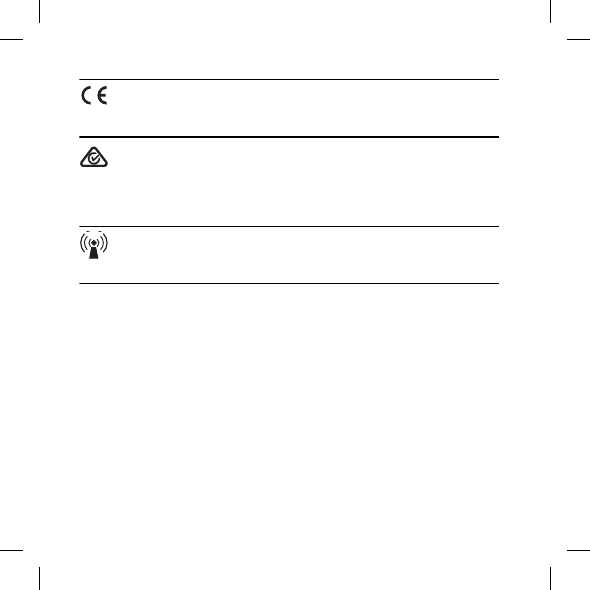
Symbol Bezeichnung/Beschreibung
CE-Kennzeichnung
Das Produkt befindet sich in Übereinstimmung mit den Anforderungen
der europäischen Richtlinien zur CE-Kennzeichnung.
RCM Zeichen
Das Produkt entspricht hinsichtlich der elektromagnetischen
Verträglichkeit und des Funkfrequenzspektrums den regulatorischen
Anforderungen an Produkte, die für den australischen und
neuseeländischen Markt bestimmt sind.
Interferenz
In der Nähe des Produktes können elektromagnetische Interferenzen
auftreten.
30

DESCRIPTION DE L'APPAREIL
(Voir l’illustration 1)
1.1 Bouton de streaming
1.2 Bouton d'alimentation
1.3 Voyant
1.4 Microphone et voyant
1.5 Port de chargement
1.6 Pince
Usage auquel l'appareil est destiné
L'appareil est un microphone avec une radio intégrée. Il est conçu pour
transmettre le son à un COM-DEX connecté aux aides auditives de
l'utilisateur. L'objectif est d'optimiser la capacité de la personne appareillée à
entendre la parole dans des situations d'écoute difficiles.
Pour une connectivité optimale, l'appareil et le COM-DEX doivent être en
vue l'un de l'autre.
Les accessoires
(Voir l’illustration 2)
Câble USB
31

CHARGEMENT DE VOTRE APPAREIL
(Voir l’illustration 3)
Connectez le câble USB à votre appareil et à l'alimentation électrique.
Comptez environ 3 heures pour charger votre appareil.
REMARQUE
Avant d'utiliser l'appareil, vous devez le déconnecter du câble USB.
Autonomie de la pile : 8 heures de transmission / 8 jours en veille.
32

ALLUMER ET ÉTEINDRE L'APPAREIL
Pour allumer votre appareil :
●appuyez sur le bouton d'alimentation et maintenez-le enfoncé pendant
3 secondes.
Pour éteindre votre appareil :
●Appuyez sur le bouton d'alimentation et maintenez-le enfoncé pendant
3 secondes.
L'appareil s'éteint automatiquement s'il n'a pas transmis de son pendant
plus de 30 minutes.
33

APPAIRAGE DE VOTRE APPAREIL
Appairage de votre appareil à votre COM-DEX
Lorsque vous appairez votre appareil à votre COM-DEX pour la première
fois, veuillez suivre ces étapes :
1. Assurez-vous que votre COM-DEX est en mode d'appairage. Veuillez
consulter le guide d'utilisation du COM-DEX.
2. Allumez votre appareil. La première fois que vous ferez cela, l'appareil
sera mis en mode d'appairage et il se connectera automatiquement à
votre COM-DEX.
REMARQUE
Lorsque vous aurez appairé votre appareil à votre COM-DEX, il restera ainsi
et se connectera automatiquement si votre COM-DEX est allumé.
Appairage de votre appareil à un autre COM-DEX :
1. Allumez votre appareil.
2. Réinitialisez les réglages d'usine de votre appareil en appuyant sur les
deux boutons pendant 5 secondes. L'appareil sera mis en mode
appairage.
3. Suivez la procédure d'appairage décrite ci-dessus.
REMARQUE
Votre Remote Mic (microphone à distance) est uniquement conçu pour être
utilisé avec un COM-DEX et ne fonctionnera pas avec un autre appareil.
34

UTILISATION DE VOTRE APPAREIL
(Voir l’illustration 4)
Fixez l'appareil sur le col de la chemise de la personne que vous souhaitez
entendre.
Allumez l'appareil.
Pour démarrer et arrêter la transmission, il vous suffit d'appuyer sur le
bouton de streaming de votre appareil. Lors de la transmission, le voyant
deviendra vert.
Le réglage du son
Vous pouvez ajuster le son que votre appareil transmet à votre COM-DEX
avec 3 niveaux différents. Pour ce faire, il vous suffit d'appuyer brièvement
sur le bouton d'alimentation situé sur le côté de votre appareil.
Indicateurs visuels
(Voir l’illustration 5)
Votre appareil est doté de deux voyants qui clignotent de différentes
couleurs. L'objectif de ces couleurs est de vous informer sur le mode sur
lequel se trouve votre appareil à tout moment.
●Voyant rouge constant sur les deux Voyants : L'appareil est en charge.
●Voyant vert constant sur les deux Voyants : L'appareil est totalement
chargé.
●Voyant clignotant bleu-rouge-bleu-rouge sur les deux Voyants :
L'appareil est prêt à être appairé.
35

●Voyant clignotant bleu sur le haut Voyant : L'appareil est allumé, mais
n'est pas connecté au COM-DEX appairé.
●Voyant clignotant vert sur le haut Voyant : L'appareil est allumé et
connecté au COM-DEX, mais ne transmet pas.
●Voyant constant vert sur le haut Voyant : L'appareil est allumé et
transmet le son.
●Voyant clignotant rouge de temps en temps sur les deux Voyants : La
pile est épuisée.
L’entretien
●Nettoyez l’appareil avec un chiffon humide. N'utilisez pas de produits
liquides ou de produits chimiques.
●Ne le plongez pas dans un liquide.
●Lorsque vous ne l'utilisez pas, gardez-le dans un endroit sec hors de
portée des enfants et des animaux domestiques.
●N'essayez jamais d'ouvrir ou de réparer vous-même l'appareil. Cela doit
être fait par des techniciens agréés uniquement.
36

PROBLÈMES ET SOLUTIONS
Problème Cause possible Solution
L'appareil ne fonctionne
pas 1. Pile de l'appareil
épuisée
2. Pile du COM-DEX
épuisée
3. Hors de portée
1. Chargez la pile de
l'appareil
2. Chargez votre COM-
DEX
3. Déplacez-le dans la
portée
Pas de son 1. Non appairé à COM-
DEX
2. COM-DEX est hors
de portée des aides
auditives
3. Les piles de l'aide
auditive sont
épuisées
1. Recommencez le
processus
d'appairage
2. Déplacez-le dans la
portée
3. Remplacez les piles
des aides auditives
Si le problème persiste, contactez votre audioprothésiste.
37

Avertissements
N’utilisez pas l'appareil dans des mines ou d’autres lieux contenant des
gaz explosifs.
Ne l’exposez pas à des températures extrêmes ou à une forte humidité.
Lorsque l'appareil est connecté via un câble micro USB à du matériel
alimenté sur secteur comme un chargeur, un PC, une source audio ou tout
autre appareil semblable, ce matériel doit répondre aux normes CEI
60065, CEI 60950-1, CEI 60601-1 ou à toute autre norme équivalente.
38
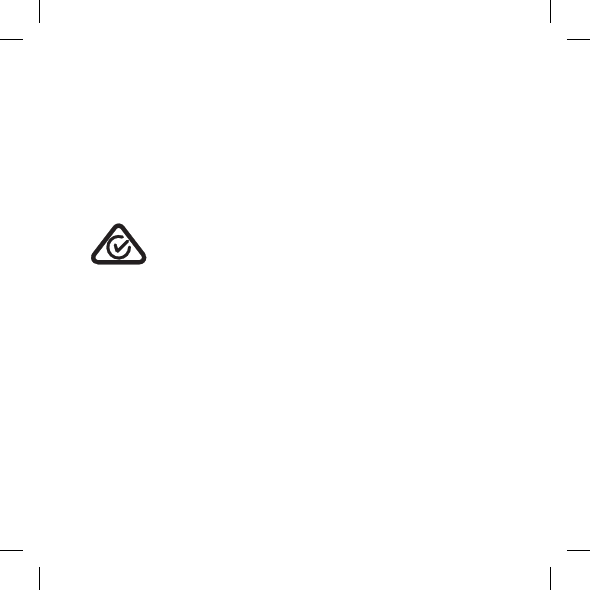
MENTIONS RÉGLEMENTAIRES
Directive 1999/5/CE
Par le présent, Widex A/S déclare que ce COM-DEX Remote Mic est
conforme aux exigences essentielles et aux autres dispositions pertinentes
de la directive 1999/5/CE.
Vous trouverez une copie de la déclaration de conformité sur :
www.widex.com/doc.
N26346
Informations concernant la mise au rebut
Ne jetez pas les aides auditives, les accessoires des aides auditives et les
piles avec les ordures ménagères ordinaires.
Les aides auditives, les piles et les accessoires des aides auditives doivent
être jetés dans des sites de collecte des déchets d'équipements électriques
et électroniques ou bien déposés chez votre audioprothésiste en vue de leur
élimination en toute sécurité. L'élimination appropriée aide à protéger la
santé humaine et l'environnement.
39
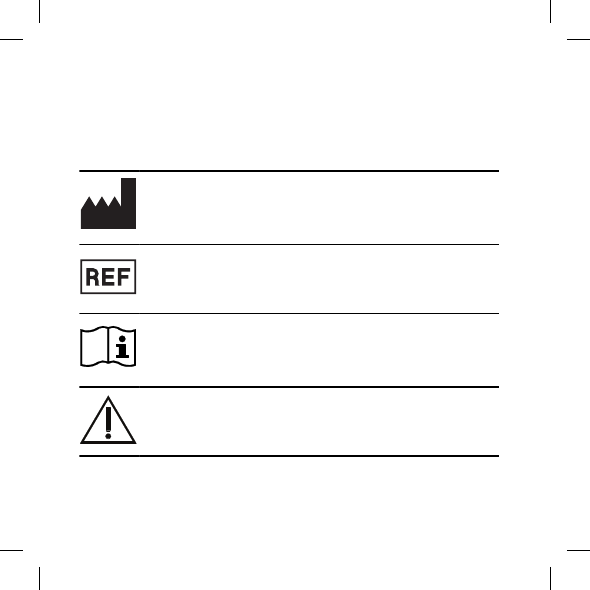
LES SYMBOLES
Les symboles
Symboles communément utilisés par Widex A/S pour l'étiquetage des
dispositifs médicaux (étiquettes/IFU/etc.)
Symbole Titre/Description
Fabricant
Le produit est fabriqué par le fabricant dont le nom et l'adresse
sont mentionnés à côté du symbole. Le cas échéant, la date de
fabrication est également mentionnée.
Référence
La référence du produit.
Consulter le mode d’emploi
Le mode d'emploi comprend d'importantes informations
(avertissements/précautions) qui doivent être lues avant
d'utiliser le produit.
Avertissement
Les textes indiqués par un symbole d'avertissement doivent être
lus avant d'utiliser le produit.
40
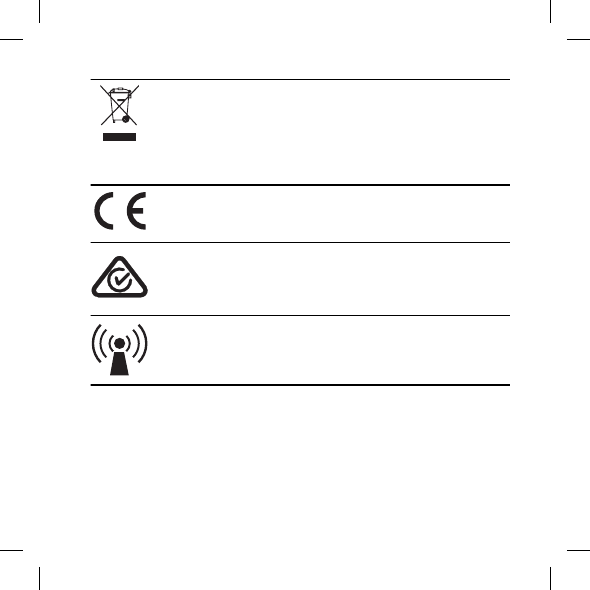
Symbole Titre/Description
Marquage DEEE
"Ne pas jeter avec les ordures ménagères ordinaires"
Lorsqu'un produit doit être mis au rebut, il doit être envoyé dans
un point de collecte agréé pour le recyclage et la récupération
pour prévenir le risque d'effets nocifs sur l'environnement ou la
santé humaine dû à la présence de substances dangereuses.
Marquage CE
Le produit est conforme aux exigences définies dans les
directives européennes sur le marquage CE.
Marquage RCM
Le produit est conforme à la sécurité électrique, aux exigences
réglementaires relatives à la CEM et au spectre radioélectrique
pour les produits destinés au marché australien ou néozélandais.
Interférence
Il peut se produire des interférences électromagnétiques à
proximité du produit.
41

DESCRIPCIÓN DEL DISPOSITIVO
(Vea la ilustración 1)
1.1 Tecla de transmisión
1.2 Interruptor
1.3 LED
1.4 Micrófono y LED
1.5 Puerto de carga
1.6 Pinza
Utilización prevista
El COM-DEX Remote Mic es un micrófono que cuenta con una radio
integrada cuyo objetivo es transmitir el sonido a un COM-DEX conectado
al/los audífono(s) del usuario. El objetivo es mejorar la habilidad del usuario
de audífonos de escuchar el habla en situaciones de escucha difíciles.
Para una conectividad óptima, la ayuda COM-DEX y el dispositivo deben
estar directamente enfrente el uno del otro.
NOTA
Solo debe utilizar su Remote Mic con una ayuda COM-DEX y no funcionará con
ningún otro dispositivo.
42

Accesorios
(Vea la ilustración 2)
Cable USB
43

CÓMO CARGAR EL DISPOSTIVO
(Vea la ilustración 3)
Conecte el cable USB al dispositivo y al suministro de energía. La carga del
dispositivo lleva aproximadamente 3 horas.
NOTA
Desconecte el cable USB antes de utilizar el dispositivo.
Vida útil de la pila: 8 horas de uso/8 días en reposo.
44

CÓMO ENCENCER Y APAGAR EL DISPOSITIVO
Para encender el dispositivo:
●pulse y mantenga pulsado el interruptor durante 3 segundos.
Para apagar el dispositivo:
●pulse y mantenga pulsado el interruptor durante 3 segundos.
El dispositivo se apaga automáticamente si no ha estado transmitiendo
sonido durante más de 30 minutos.
45

CÓMO EMPAREJAR EL DISPOSTIVO
Cómo emparejar el dispositivo con la ayuda COM-DEX
Para emparejar el dispositivo con su COM-DEX por primera vez, siga los
pasos siguientes:
1. Compruebe que la ayuda COM-DEX está en el modo de
emparejamiento. Consulte las instrucciones de uso de su COM-DEX.
2. Encienda el dispositivo. La primera vez que lo encienda, el dispositivo
pasará al modo de emparejamiento y se conectará automáticamente a
la ayuda COM-DEX.
NOTA
Una vez emparejados el dispositivo y la ayuda COM-DEX, ambos
conservarán este ajuste y se conectarán automáticamente al encender su
COM-DEX.
Cómo emparejar el dispositivo con otro COM-DEX:
1. Encienda el dispositivo.
2. Reinicie el dispositivo a los ajustes de fábrica pulsando
simultáneamente ambas teclas durante 5 segundos. El dispositivo
pasará al modo de emparejamiento.
3. Siga el procedimiento de emparejamiento descrito anteriormente.
NOTA
Solo debe utilizar su Remote Mic con una ayuda COM-DEX y no funcionará
con ningún otro dispositivo.
46

CÓMO UTILIZAR EL DISPOSTIVO
(Vea la ilustración 4)
Con la pinza, fije el dispositivo al cuello de la camisa/camiseta de la persona
que desea poder escuchar.
Encienda el dispositivo.
Para iniciar y parar la transmisión, pulse la tecla de transmisión de su
Remote Mic. Durante la transmisión, el LED mostrará una luz verde.
El ajuste del sonido
Puede ajustar el sonido transmitido por el dispositivo a su COM-DEX en tres
intervalos. Lo único que tiene que hacer es pulsar brevemente el interruptor
situado en uno de los lados del dispositivo. El sonido se ajusta en un
intervalo circular: desde el nivel medio, pasará al más alto y después al más
bajo, para finalmente volver al nivel medio con la tercera pulsación.
Indicadores visuales
(Vea la ilustración 5)
Su dispositivo cuenta con dos LEDS que parpadean en colores diferentes. El
objetivo de dichos colores es informarle del modo en el que se encuentra su
dispositivo en un momento dado.
●Luz roja constante en ambos LEDs: el dispositivo se está cargando.
●Luz verde constante en ambos LEDs: el dispositivo está cargado.
●Luz parpadeante roja-azul-roja-azul en ambos LEDS: El dispositivo está
listo para ser emparejado.
47

●Luz azul parpadeante en el LED superior: el dispositivo está encendido
pero no hay conexión con una ayuda COM-DEX emparejada.
●Luz verde parpadeante en el LED superior: el dispositivo está encendido
y conectado a una unidad COM-DEX, pero no está transmitiendo.
●Luz verde constante en el LED superior: el dispositivo está encendido y
transmitiendo.
●Luz roja que parpadea ocasionalmente en ambos LEDs: la batería está
agotada.
Mantenimiento
●Limpie el dispositivo con un paño húmedo. No utilice líquidos ni
productos químicos.
●No sumerja el dispositivo en líquidos.
●Si no está utilizando el dispositivo, manténgalo fuera del alcance de los
niños y las mascotas.
●No desmonte nunca el dispositivo usted mismo. El dispositivo solo
deber ser desmontado o reparado por personas autorizadas.
48

SOLUCIÓN DE PROBLEMAS
Problema Causa posible Solución
El dispositivo no
funciona 1. La batería del
Remote Mic está
agotada
2. Batería de COM-DEX
agotada
3. Fuera de radio de
acción
1. Cargue la batería del
Remote Mic
2. Cargue su COM-DEX
3. Desplácese dentro
del radio de acción
No hay sonido 1. No está emparejado
con COM-DEX
2. COM-DEX está fuera
del radio de acción
de los audífonos
3. Pilas del audífono
agotadas
1. Vuelva a emparejar
2. Desplácese hasta
estar dentro del
radio de acción
3. Cambie las pilas del
audífono
Si persiste el problema, contacte con su audioprotesista
49

ADVERTENCIAS
No utilice el dispositivo en minas o lugares con gases explosivos.
No exponga el dispositivo a temperaturas extremas o a altos niveles de
humedad.
Si conecta el dispositivo mediante el cable USB a un equipo externo
conectado a la red eléctrica, como por ejemplo un cargador, ordenador,
fuente de audio o similar, dicho equipo debe cumplir con los requisitos
establecidos en los estándares de seguridad IEC 60065, IEC 60950-1, IEC
60601-1 o equivalentes.
50
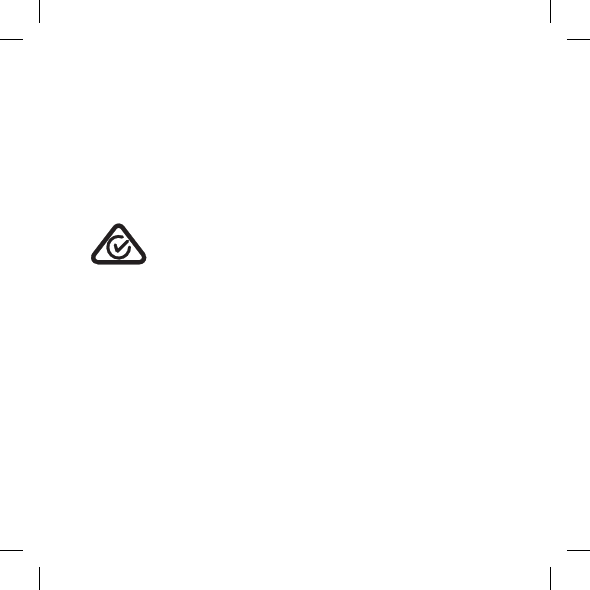
INFORMACIÓN DE REGLAMENTACIÓN
Directiva 1999/5/EC
Por medio de la presente Widex A/S declara que este COM-DEX Remote Mic
cumple con los requisitos esenciales y cualesquiera otras disposiciones
aplicables o exigibles de la Directiva 1999/5/CE.
Puede ver una copia de la Declaración de conformidad en:
www.widex.com/doc.
N26346
Información sobre la eliminación de residuos
No se deshaga de los audífonos, los accesorios para audífonos o las pilas con
los residuos domésticos.
Los audífonos, las pilas y los accesorios para audífonos se deben eliminar en
lugares destinados para la eliminación de residuos de aparatos eléctricos y
electrónicos. También puede entregárselos a su audioprotesista para que
éste se encargue de eliminarlos de un modo seguro.
51
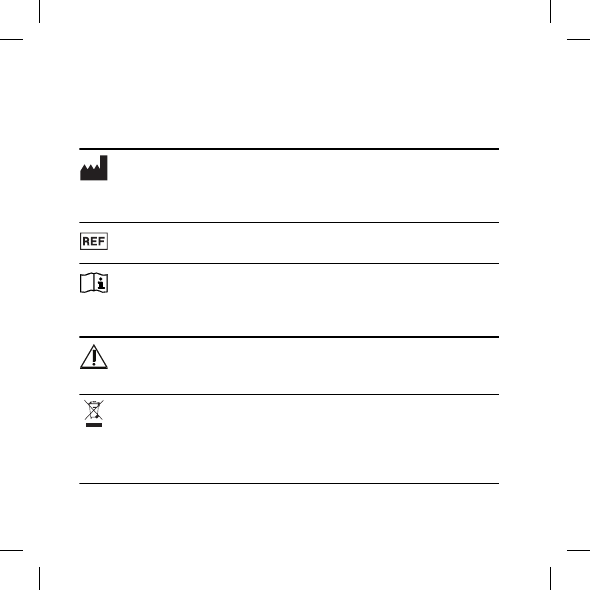
SÍMBOLOS
Éstos son los símbolos utilizados habitualmente por Widex para el etiquetado
de productos sanitarios (etiquetas, instrucciones de uso, etc.)
Símbolo Título/descripción
Fabricante
El producto ha sido producido por el fabricante cuyo nombre y
dirección se indican al lado del símbolo. Si procede, también se puede
indicar la fecha de fabricación.
Número de catálogo
El número de catálogo del producto (artículo).
Consultar las instrucciones de uso
Las instrucciones de uso contienen información cautelar importante
(avisos/precauciones) y es necesario leerlas antes de utilizar el
producto.
Aviso
Se debe leer todo texto marcado con un símbolo de advertencia antes
de usar el producto.
Marca RAEE
"No tire el dispositivo a la basura". Cuando necesite deshacerse de un
producto, debe enviarlo a lugares de recogida designados para el
reciclaje y recuperación, para así evitar dañar el medio ambiente o la
salud humana como causa de la presencia de sustancias peligrosas.
52
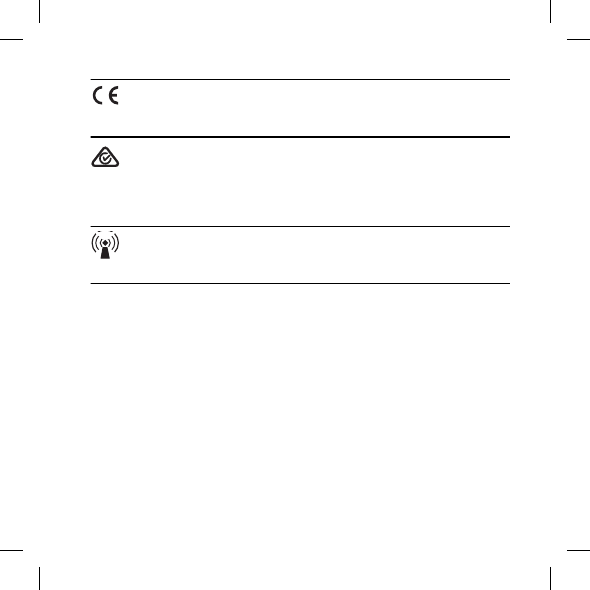
Símbolo Título/descripción
Marca CE
El producto está en conformidad con los requisitos establecidos en las
directivas europeas sobre el marcado CE.
Marca RCM
El producto cumple con los requisitos reguladores de compatibilidad
electromagnética (EMC), seguridad eléctrica y de espectro de radio
establecidos para los productos suministrados a los mercados de
Australia y Nueva Zelanda.
Interferencia
Pueden producirse interferencias electromagnéticas en las zonas
adyacentes al producto.
53

BESKRIVELSE AF ENHEDEN
(Se illustration 1)
1.1 Streamingknap
1.2 Tænd/sluk-knap
1.3 Lysdiode
1.4 Mikrofon og lysdiode
1.5 Opladningsport
1.6 Klips
Påtænkt anvendelse
COM-DEX Remote Mic er en mikrofon med integreret radio til transmission
af lyd til en COM-DEX, der er tilsluttet brugerens høreapparat(er). Målet er
at forbedre høreapparatbrugerens evne til at høre tale i vanskelige
lyttesituationer.
For at opnå optimal konnektivitet skal enheden og COM-DEX være inden for
hinandens synsfelt.
BEMÆRK
Fjernmikrofonen er kun beregnet til brug sammen med en COM-DEX og
fungerer ikke sammen med andre enheder.
54

Tilbehør
(Se illustration 2)
USB-kabel
55

OPLADNING AF ENHEDEN
(Se illustration 3)
Tilslut USB-kablet til enheden og strømforsyningen. Det tager ca. 3 timer at
oplade enheden.
BEMÆRK
USB-kablet skal kobles fra, før du kan bruge enheden.
Batterilevetid: 8 timers streaming, 8 dages standby.
56

TÆND OG SLUK FOR ENHEDEN
Tænd for enheden:
●Tryk på tænd/sluk-knappen, og hold den nede i 3 sekunder.
Sluk for enheden:
●Tryk på tænd/sluk-knappen, og hold den nede i 3 sekunder.
Enheden slukker automatisk, hvis den ikke har streamet lyd i mere end 30
minutter.
57

PARRING AF ENHEDEN
Parring af enheden med COM-DEX
Første gang du parrer enheden med COM-DEX, skal du følge disse trin:
1. Sørg for, at COM-DEX er i parringsindstilling. Se COM-DEX
brugervejledningen.
2. Tænd for enheden. Første gang du gør dette, sættes enheden til
parringsindstilling, og den tilsluttes automatisk til COM-DEX.
BEMÆRK
Når du først har parret enheden med COM-DEX, bliver den ved med at være
parret og tilsluttes automatisk, hvis COM-DEX er tændt.
Parring af enheden med en anden COM-DEX:
1. Tænd for enheden.
2. Nulstil enheden til fabriksindstillinger ved at trykke på begge knapper i
5 sekunder. Enheden sættes til parringsindstilling.
3. Følg parringsproceduren som beskrevet ovenfor.
BEMÆRK
Fjernmikrofonen er kun beregnet til brug sammen med en COM-DEX og
fungerer ikke sammen med andre enheder.
58

BRUG AF ENHEDEN
(Se illustration 4)
Anbring enheden på skjortekraven af den person, du gerne vil høre.
Tænd for enheden.
Streaming startes og stoppes ved at trykke på streamingknappen på
Remote Mic-enheden. Mens du streamer, lyser lysdioden grønt.
Lydregulering
Den lyd, som enheden streamer til COM-DEX, kan du regulere i tre niveauer.
Tryk på tænd-knappen på siden af enhended. Lyden vil blive reguleret i tre
trin: først op til det højeste niveau, derefter til det laveste og sidst tilbage til
normalt.
Visuelle indikatorer
(Se illustration 5)
Enheden har to lysdioder, der blinker med forskellige farver. Formålet med
disse farver er at informere dig om, hvilken indstilling enheden er i på
ethvert givet tidspunkt.
●Konstant rødt lys fra begge lysdioder: Enheden oplader.
●Konstant grønt lys fra begge lysdioder: Enheden er fuldt opladet.
●Blinkende blåt-rødt-blåt-rødt lys fra begge lysdioder Enheden er klar til
at blive parret.
●Blinkende blåt lys fra den øverste lysdiode: Enheden er tændt, men der
er ingen forbindelse til den parrede COM-DEX.
59

●Blinkende grønt lys fra den øverste lysdiode: Enheden er tændt og
tilsluttet COM-DEX, men der er ingen streaming.
●Konstant grønt lys fra den øverste lysdiode: Enheden er tændt og
streamer.
●Periodisk blinkende rødt lys fra begge lysdioder: Batteriniveauet er lavt.
Vedligeholdelse
●Rengør enheden med en fugtig klud. Brug ikke væske eller kemikalier.
●Må ikke lægges i væske.
●Når enheden ikke er i brug, skal den opbevares på et tørt sted, hvor
børn og husdyr ikke kan få fat i den.
●Forsøg aldrig selv at åbne eller reparere enheden. Dette må kun udføres
af autoriserede teknikere.
60

FEJLFINDING
Problem Mulig årsag Løsning
Enheden virker ikke 1. Remote Mic, lavt
batteriniveau
2. COM-DEX, lavt
batteriniveau
3. Uden for
rækkevidde
1. Oplad Remote Mics
batteri
2. Oplad COM-DEX
3. Stil dig inden for
rækkevidden
Ingen lyd 1. Ikke parret med
COM-DEX
2. COM-DEX er uden
for
høreapparaternes
rækkevidde
3. Høreapparaternes
batteriniveau er lavt
1. Gentag
parringsprocessen
2. Stil dig inden for
rækkevidden
3. Udskift
høreapparaternes
batterier
Hvis problemet stadig er til stede, så kontakt høreklinikken.
61

Advarsler
Brug ikke enheden i miner eller andre områder med eksplosive luftarter.
Må ikke udsættes for kraftig varme/kulde eller høj fugtighed.
Når enheden anvendes sammen med udstyr, som er tilsluttet via et
mikro-USB-kabel, f.eks. en oplader, en PC, en lydkilde eller lignende, skal
sikkerhedsreglerne for dette udstyr overholdes, som angivet i IEC 60065,
IEC 60950-1, IEC 60601-1 eller tilsvarende standarder.
62
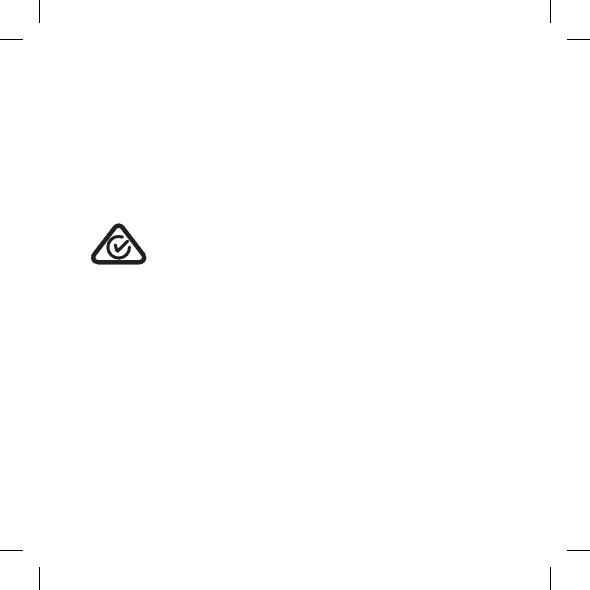
REGULATORISK INFORMATION
Direktiv 1999/5/EF
Undertegnede Widex A/S erklærer herved, at følgende udstyr COM-DEX
Fjernmikrofon overholder de væsentlige krav og øvrige relevante krav i
direktiv 1999/5/EF.
En kopi af Overensstemmelseserklæringen kan findes under:
www.widex.com/doc.
N26346
Oplysninger om kassering
Høreapparater, tilbehør og batterier må ikke bortskaffes med det
almindelige husholdningsaffald.
Høreapparater, batterier og høreapparattilbehør skal bortskaffes på steder,
der er tiltænkt affald af elektrisk og elektronisk udstyr, eller afleveres til din
høreklinik til sikker bortskaffelse.
63
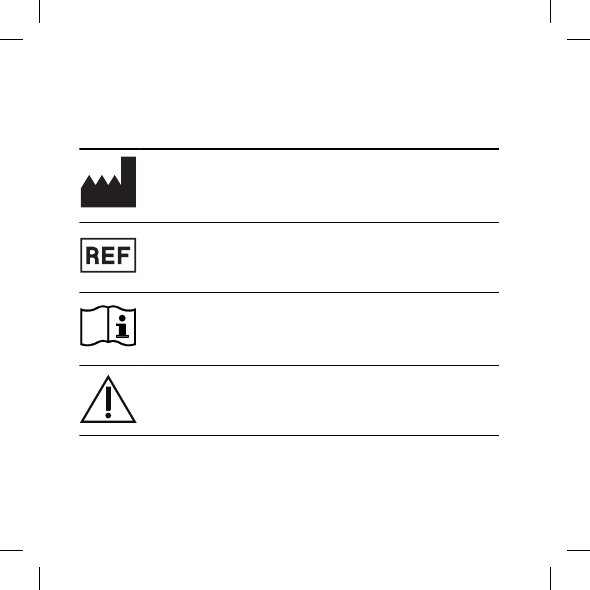
SYMBOLER
Symboler, som ofte anvendes af Widex A/S på pakkematerialet (etiketter,
brugsanvisninger mv.) til medicinsk udstyr
Symbol Titel/beskrivelse
Producent
Sammen med dette symbol angives navn og adresse på den
producent, der har produceret produktet. Såfremt det er relevant,
angives produktionsdatoen også.
Katalognummer
Produktets katalognummer (varenummer)
Se brugsanvisningen
Brugsanvisningen indeholder vigtig sikkerhedsinformation
(advarsler/forholdsregler) og skal læses, inden produktet tages i
brug.
Advarsel
Tekst markeret med et advarselssymbol skal læses, inden produktet
tages i brug.
64
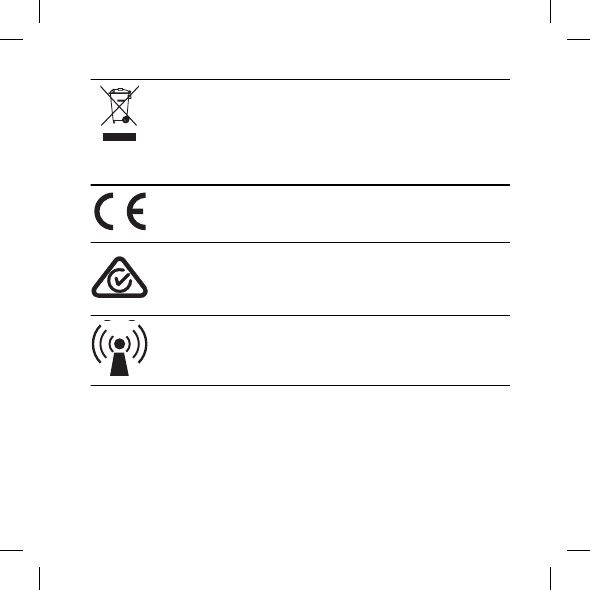
Symbol Titel/beskrivelse
WEEE-mærke
"Må ikke kasseres som almindeligt affald"
Når produktet skal kasseres, skal det sendes til et autoriseret
indsamlingssted for genbrug og genanvendelse af elektrisk og
elektronisk udstyr for at minimere risikoen for miljøet og for
menneskers sundhed som følge af tilstedeværelsen af farlige stoffer.
CE-mærke
Produktet overholder kravene i EU-direktiverne for CE-mærket
udstyr.
RCM-mærke
Produktet overholder de gældende elektriske sikkerhedskrav og
regulatoriske krav til EMC og radiospektrum for produkter, som
distribueres til Australien og New Zealand.
Interferens
Elektromagnetisk interferens kan forekomme i nærheden af
produktet.
65

DESCRIZIONE DEL DISPOSITIVO
(Vedi figura 1)
1.1 Pulsante di streaming
1.2 Pulsante di accensione
1.3 LED
1.4 Microfono e LED
1.5 Presa di ricarica
1.6 Clip
Uso previsto
Il dispositivo è un microfono con radio integrata destinato a trasmettere il
suono a un COM-DEX collegato agli apparecchi acustici dell'utente.
L'obiettivo è quello di migliorare la capacità dell'utente degli apparecchi
acustici di sentire il parlato in situazioni di ascolto difficili.
Per una connettività ottimale il dispositivo e il COM-DEX devono trovarsi
all'interno del reciproco campo visivo.
Accessori
(Vedi figura 2)
Cavo USB
66

RICARICA DEL DISPOSITIVO
(Vedi figura 3)
Collegare il cavo USB al dispositivo e all'alimentazione. Sono necessarie circa
3 ore per caricare il dispositivo.
NOTA
Prima di poter utilizzare il dispositivo, è necessario disconnettere il cavo USB.
Durata batteria: 8 ore di streaming, 8 giorni in standby.
67

ACCENSIONE E SPEGNIMENTO DEL DISPOSITIVO
Accensione del dispositivo:
●premere il tasto di accensione e tenerlo premuto per 3 secondi.
Spegnimento del dispositivo:
●premere il pulsante di accensione e tenerlo premuto per 3 secondi.
Il dispositivo si spegne automaticamente se non esegue streaming audio da
più di 30 minuti.
68

ACCOPPIAMENTO DEL DISPOSITIVO
Accoppiamento del dispositivo al proprio COM-DEX
Per accoppiare il dispositivo al proprio COM-DEX per la prima volta,
attenersi alla seguente procedura:
1. Assicurarsi che il COM-DEX sia in modalità di accoppiamento. Consultare
la Guida utente di COM-DEX.
2. Accendere il dispositivo. La prima volta che si esegue questa
operazione, il dispositivo sarà impostato in modalità di accoppiamento e
si connetterà automaticamente al COM-DEX.
NOTA
Una volta accoppiato il dispositivo al COM-DEX, resterà accoppiato e si
connetterà automaticamente se il COM-DEX è acceso.
Accoppiamento del dispositivo a un altro COM-DEX:
1. Accendere il dispositivo.
2. Ripristinare il dispositivo alle impostazioni di fabbrica premendo
entrambi i pulsanti per 5 secondi. Il dispositivo verrà impostato in
modalità di accoppiamento.
3. Seguire la procedura di accoppiamento sopra descritta.
NOTA
Il microfono remoto è progettato esclusivamente per essere utilizzato con
un COM-DEX e non funzionerà con nessun altro dispositivo.
69

USO DEL DISPOSITIVO
(Vedi figura 4)
Collocare il dispositivo sul colletto della camicia della persona che si
desidera sentire.
Accendere il dispositivo.
Per avviare e interrompere lo streaming, basta premere il pulsante di
streaming sul dispositivo. Durante lo streaming, il LED emetterà una luce
verde.
Regolazione del suono
È possibile regolare il suono che il dispositivo invia in streaming al COM-DEX
in 3 livelli. A tal scopo, è sufficiente premere brevemente il pulsante di
accensione sul lato del dispositivo.
Indicatori visivi
(Vedi figura 5)
Il dispositivo dispone di due LED che lampeggiano con colori diversi. Lo
scopo di questi colori è di informarvi sulle modalità in cui il dispositivo si
trova in qualsiasi momento.
●Luce rossa fissa su entrambi i LED: Il dispositivo è in carica.
●Luce verde fissa su entrambi i LED: Il dispositivo è completamente
carico.
●Luce lampeggiante blu-rossa-blu-rossa su entrambi i LED: Il dispositivo
è pronto per essere accoppiato.
70

●Luce lampeggiante blu sul LED superiore: Il dispositivo è acceso, ma non
c'è alcun collegamento con il COM-DEX accoppiato.
●Luce verde lampeggiante sul LED superiore: Il dispositivo è acceso e
collegato al COM-DEX, ma non sta inviando audio in streaming.
●Luce verde fissa sul LED superiore: Il dispositivo è acceso e sta inviando
audio in streaming.
●Luce rossa lampeggiante occasionalmente su entrambi i LED: La
batteria è scarica.
Manutenzione
●Pulire il dispositivo con un panno umido. Non utilizzare liquidi o
sostanze chimiche.
●Non immergere in liquidi.
●Quando il dispositivo non è in uso, conservarlo in un luogo asciutto e
fuori dalla portata dei bambini ed animali.
●Non tentare mai di aprire o riparare l'apparecchio da soli. Rivolgersi solo
a tecnici autorizzati in questi casi.
71

RISOLUZIONE DI PROBLEMI
Problema Possibile causa Soluzione
Il dispositivo non
funziona 1. Batteria del
dispositivo scarica
2. Batteria del COM-
DEX scarica
3. Fuori portata
1. Caricare la batteria
del dispositivo
2. Caricare il COM-DEX
3. Spostarsi all'interno
della portata
Assenza di suono 1. Non accoppiato al
COM-DEX
2. II COM-DEX è fuori
della portata degli
apparecchi acustici
3. Batterie
dell'apparecchio
acustico scariche
1. Ripetere il processo
di accoppiamento
2. Spostarsi all'interno
della portata
3. Cambiare le batterie
degli apparecchi
acustici
Se il problema persiste, contattare il proprio audioprotesista.
72

Avvertenze
Non usare il dispositivo in miniere o altre aree con gas esplosivi.
Non esporre a temperature estreme o alta umidità.
Quando il dispositivo è collegato via cavo micro-USB ad apparecchiature
esterne alimentate da rete elettrica quali un caricabatterie, PC, o simili, tali
apparecchiature devono essere conformi a IEC 60065, IEC 60950-1, IEC
60601-1 o norma di sicurezza equivalente.
73

INFORMAZIONI NORMATIVE
Direttiva 1999/5/CE
Con la presente, Widex A/S dichiara che il presente microfono remoto COM-
DEX è conforme ai requisiti essenziali e ad altre disposizioni contenute nella
Direttiva 1999/5/CE.
Una copia della Dichiarazione di conformità è disponibile all'indirizzo:
www.widex.com/doc.
N26346
Informazioni relative allo smaltimento
Non smaltire apparecchi acustici, accessori di apparecchi acustici e batterie
insieme ai rifiuti domestici comuni.
Gli apparecchi acustici, le batterie e gli accessori per apparecchi acustici
devono essere smaltiti in siti destinati ad apparecchiature elettriche ed
elettroniche o consegnati all'audioprotesista per uno smaltimento in
condizioni di sicurezza. Il corretto smaltimento aiuta a proteggere la salute
umana e l'ambiente.
74
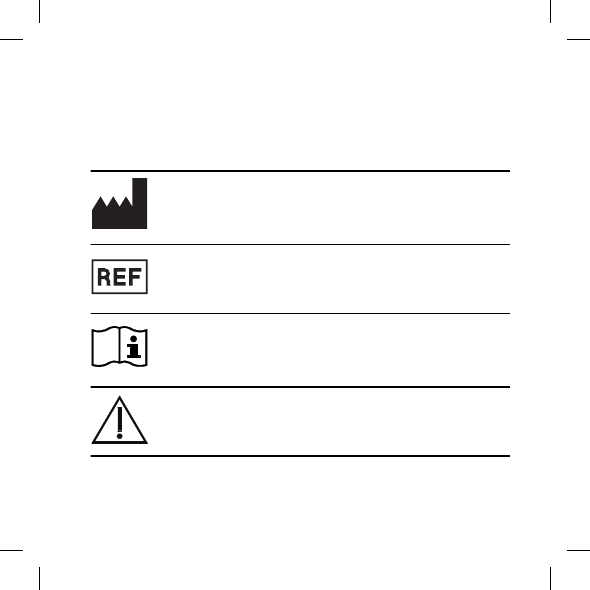
SIMBOLI
Simboli
Simboli comunemente usati da Widex A/S per l'etichettatura dei dispositivi
medici (etichette, istruzioni per l'uso, ecc.)
Simbolo Titolo/Descrizione:
Produttore
Il prodotto è fabbricato dal produttore il cui nome e indirizzo
sono riportati accanto al simbolo. Se del caso, può essere
indicata anche la data di fabbricazione.
Numero di catalogo
Numero di catalogo (articolo) del prodotto.
Consultare le istruzioni d'uso
Le istruzioni contengono importanti informazioni cautelative
(avvertenze/precauzioni) e devono essere lette prima di
utilizzare il prodotto.
Avvertenza
I testi contrassegnati da un simbolo di avvertenza devono essere
letti prima di utilizzare il prodotto.
75
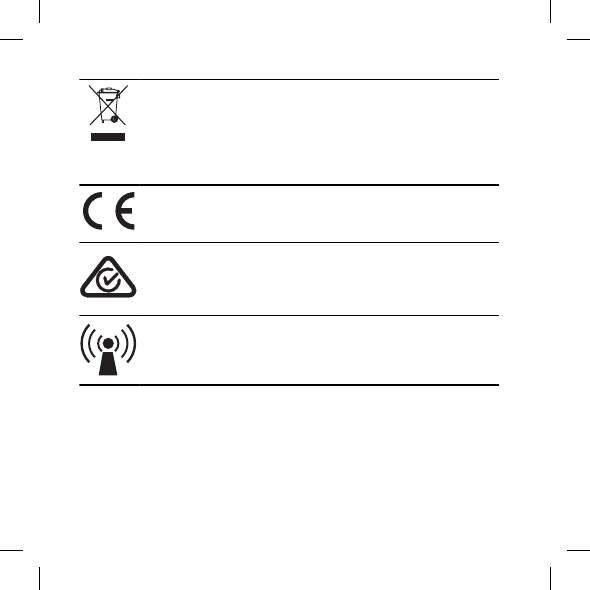
Simbolo Titolo/Descrizione:
Contrassegno RAEE
"Non per rifiuti generici"
Quando un prodotto è da scartare, deve essere conferito a un
punto di raccolta designato per il riciclaggio e recupero per
prevenire il rischio di danni all'ambiente o alla salute umana a
causa della presenza di sostanze pericolose.
Contrassegno CE
Il prodotto è conforme ai requisiti stabiliti nelle direttive europee
sul marchio CE.
Marchio RCM
Il prodotto è conforme ai requisiti normativi sulla sicurezza
elettrica, di compatibilità elettromagnetica e sullo spettro radio
per i prodotti forniti sui mercati australiano o neozelandese.
Interferenza
Interferenze elettromagnetiche possono insorgere in prossimità
del prodotto.
76

装置の説明
(図1を参照)
1.1 ストリーミングボタン
1.2 電源ボタン
1.3 LED
1.4 マイクとLED
1.5 充電ポート
1.6 クリップ
使用目的
本装置は、補聴器に接続されたCOM-DEXに音を転送するため
の無線が統合されたマイクです。補聴器をお使いの方が、
聞き取りにくい状況で話し声を聞き取りやすくすることを
目的としています。
本装置とCOM-DEXを最適な状態で接続するためには、両装置
が近くにあることが必要です。
付属品
(図2を参照)
USBケーブル
77

装置の充電
(図3を参照)
USBケーブルを装置と電源に接続してください。装置の充電
時間は約3時間です。
付記
装置のご使用前にはUSBケーブルを取り外してください。
バッテリー寿命:ストリーミングでは8時間、スタンバイモ
ードでは8日間です。
78

装置の電源のオン/オフ
装置の電源をオンにするには:
●電源ボタンを3秒間押し続けます。
装置の電源をオフにするには:
●電源ボタンを3秒間押し続けます。
30分間以上音声のストリーミングがない場合、装置の電源
は自動的にオフに切り換わります。
79

装置のペアリング
装置とCOM-DEXのペアリング
装置をCOM-DEXに初めてペアリングする場合には以下の手順
に従ってください:
1. COM-DEXがペアリングモードに設定されていることを確
認します。COM-DEXユーザーガイドを参照してくださ
い。
2. 装置の電源をオンにします。これを初めて行う場合、装
置はペアリングモードとなり、COM-DEXに自動的に接続
されます。
付記
装置とCOM-DEXとのペアリングが完了すると、COM-DEXの電
源がオンの場合にはペアリングモードとなり、COM-DEXに
自動的に接続されます。
装置と別のCOM-DEXのペアリング:
1. 装置の電源をオンにします。
2. 両方のボタンを5秒間押し、装置を工場設定にリセット
します。装置はペアリングモードとなります。
3. 上記のペアリング手順に従ってください。
付記
リモートマイクはCOM-DEX専用のため、別の装置では作動
しません。
80

装置の使用方法
(図4を参照)
話し声を聞きたい方の襟元に装置を取り付けます。
装置の電源をオンにします。
ストリーミングを開始/停止するには、装置のストリーミン
グボタンを押してください。ストリーミング中はLEDが緑色
に点灯します。
音の調節
装置からCOM-DEXへのストリーミング音声の音量を3段階で
調節することができます。音量を調節するには装置の側面
にある電源ボタンを軽く押してください。
ライトインジケータ
(図5を参照)
装置には、異なる色で点滅する2つのLEDが搭載されていま
す。色により、装置に設定されているモードが示されま
す。
●2つの LEDが 赤で点灯:装置は充電中です。
●2つの LEDが 緑で点灯:装置はフル充電されています。
●2つの LEDが 青-赤-青-赤の順で点滅:装置のペアリング
が可能です。
81

●上部の LEDが 青で点滅:装置の電源はオンになっていま
すが、ペアリングするCOM-DEXには接続されていませ
ん。
●上部の LEDが 緑で点滅:装置の電源はオンでCOM-DEXに
接続されていますが、ストリーミングは行われていませ
ん。
●上部の LEDが 緑で点灯:装置の電源はオンでストリーミ
ングが行われています。
●2つの LEDが 時折赤で点滅:バッテリーが少なくなって
います。
メンテナンス
●装置は乾いた布できれいにしてください。液体や化学薬
品を使用しないでください。
●液体に浸さないでください。
●装置を使用しない場合は、子供およびペットの手の届か
ない乾燥した場所に保管してください。
●自分自身で装置を開いたり、修理しようとしないでくだ
さい。認定技術者のみが実施します。
82

トラブルシューティング
問題点 考えられる要因 解決策
装置が作動しない 1. 装置のバッテリ
ーが少なくなっ
ている
2. COM-DEXのバッ
テリが少なくな
っている
3. 通信圏外である
1. 装置のバッテリ
ーを充電してく
ださい
2. COM-DEXを充電
してください
3. 通信圏内に移動
してください
音が出ない 1. COM-DEXにペア
リングされてい
ない
2. COM-DEXが補聴
器の通信圏外で
ある
3. 補聴器のバッテ
リが少なくなっ
ている
1. ペアリング手順
をもう一度実行
してください
2. 通信圏内に移動
してください
3. 補聴器のバッテ
リーを交換して
ください
問題が解決しない場合は販売店にご相談ください。
83

警告
鉱山などの爆発性ガスが存在する可能性がある区域では
装置を使用しないでください。
極度の高温または高い湿度にさらさないでください。
マイクロUSBケーブルで装置を充電器、PC、音源、その他
の外部装置に接続する場合、この装置はIEC 60065、IEC
60950-1、IEC 60601-1または同等の安全規格に遵守している
必要があります。
84
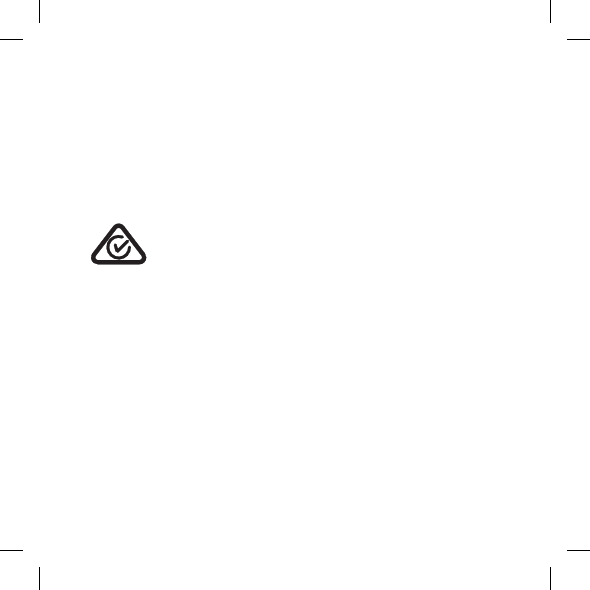
規制情報
指令1999/5/EC
ここに、Widex A/Sは、このCOM-DEXリモートマイクが指令
1999/5/ECの基本的要件およびその他の関連規定に準拠して
いることを宣言します。
適合宣言のコピーを以下に掲載します。
www.widex.com/doc
N26346
処分に関する情報
補聴器やその付属品、電池を通常の廃棄物として処分しな
いでください。
補聴器やその付属品、電池については、地区の定める電
気・電化製品の処分方法に従って処分するか、購入元へ処
分を依頼してください。
85
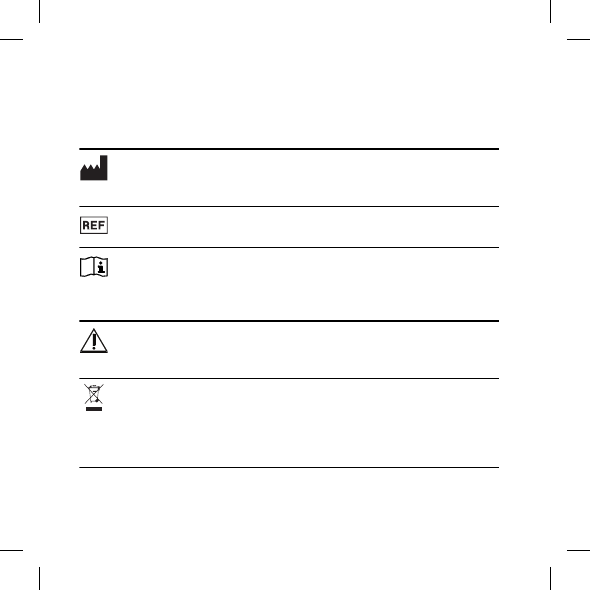
記号
ワイデックス株式会社が製造販売する管理医療機器の表示(ラ
ベルや取扱説明書など)に共通して使用される記号
記号 タイトル/説明
製造元
製品の製造者名、製造所の所在地。 製造年月も記載さ
れる場合があります。
カタログ番号
製品のカタログ(品目)番号
取扱説明書を参照
取扱説明書には安全に関する重要なお知らせ(重要/注
意)が記載されていますので、製品のご使用前に必ず
お読みください。
警告
警告記号を伴う事項は、製品のご使用前に必ずお読み
ください。
WEEEマーク
「一般廃棄物ではありません」製品の廃棄について
は、危険物質があるために環境や人の健康を害するリ
スクを防ぐため、指定されたリサイクル・回収場所に
廃棄してください。
86
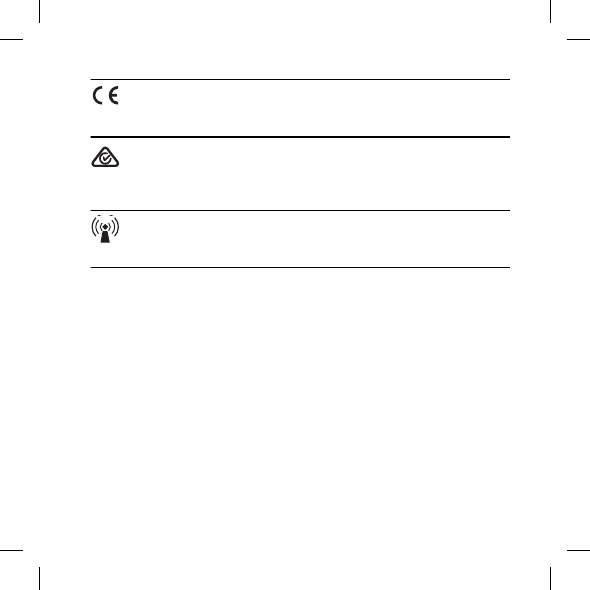
記号 タイトル/説明
CEマーク
製品は、CEマークに関する欧州指令によって定められ
た要件に適合しています。
RCMマーク
製品は、オーストラリアとニュージーランド市場に供
給される製品に対する電気安全、EMC、無線スペクトル
規制要件に準拠しています。
電磁波による干渉
製品の近くでは電磁波による干渉が起きる可能性があ
ります。
87

DESCRIPTION OF DEVICE
(See illustration 1)
1.1 Streaming button
1.2 Power button
1.3 LED
1.4 Microphone and LED
1.5 Charging port
1.6 Clip
Intended use
The COM-DEX Remote Mic is a microphone with an integrated radio
intended for transmitting sound to a COM-DEX connected to the user’s
hearing aid(s). The aim is to improve the hearing aid user’s ability to hear
speech in difficult listening situations.
For optimal connectivity the device and the COM-DEX must be within sight
of each other.
NOTE
Your Remote Mic is only intended to be used with a COM-DEX and it will not
work with any other device.
88

Accessories
(See illustration 2)
USB cable
89

CHARGING YOUR DEVICE
(See illustration 3)
Connect the USB cable to your device and the power supply. It takes
approximately 3 hours to charge your device.
NOTE
Before you can use the device, you must disconnect the USB cable.
Battery life: 8 hours streaming, 8 days standby.
90

TURNING THE DEVICE ON AND OFF
To turn on your device:
●Press the power button and keep it pressed for 3 seconds.
To turn off your device:
●Press the power button and keep it pressed for 3 seconds.
The device turns off automatically if it has not been streaming sound for
more than 30 minutes.
91

PAIRING YOUR DEVICE
Pairing your device to your COM-DEX
To pair your device to your COM-DEX for the first time, follow these steps:
1. Make sure that your COM-DEX is in pairing mode. Consult the COM-DEX
user guide.
2. Turn on your device. The first time you do this, the device will be set in
pairing mode and it will automatically connect to your COM-DEX.
NOTE
Once you have paired your device to your COM-DEX, it will remain so and
will connect automatically if your COM-DEX is on.
Pairing your device with another COM-DEX:
1. Turn on your device.
2. Reset your device to factory settings by pushing both buttons for 5
seconds. The device will be set to pairing mode.
3. Follow the pairing procedure described above.
NOTE
Your Remote Mic is only intended to be used with a COM-DEX and it will
not work with any other device.
92

USING YOUR DEVICE
(See illustration 4)
Place the device on the shirt collar of the person you'd like to hear.
Turn on the device.
To start and stop streaming, simply push the streaming button on your
Remote Mic. While streaming, the LED will show a green light.
Sound adjustment
The sound that is streamed from the device to COM-DEX can be adjusted in
3 levels. Simply push the power button on the side of the device and the
sound level will be altered in a three step circle (highest level – lowest level
– back to normal level).
Visual indicators
(See illustration 5)
Your device has two LEDs that flash with different colors. The purpose of
these colors is to inform you of which mode your device is in at any given
time.
●Constant red light on both LEDs: The device is charging.
●Constant green light on both LEDs: The device is fully charged.
●Flashing blue-red-blue-red light on both LEDS: The device is ready to
be paired.
●Flashing blue light on the top LED: The device is on, but there is no
connection to the paired COM-DEX.
93

●Flashing green light on the top LED: The device is on and connected to
the COM-DEX, but it is not streaming.
●Constant green light on the top LED: The device is on and streaming.
●Occasionally flashing red light on both LEDs: The battery is low.
Maintenance
●Clean the device with a damp cloth. Do not use any liquids or chemicals.
●Do not immerse in liquids.
●When the device is not in use keep it in a dry location out of reach of
children and pets.
●Never try to open or repair the device yourself. This may only be done
by authorized technicians.
94

TROUBLESHOOTING
Problem Possible cause Solution
The device does not
work 1. Remote Mic battery
low
2. COM-DEX battery
low
3. Out of range
1. Charge Remote Mic
battery
2. Charge your COM-
DEX
3. Move into range
No sound 1. Not paired to COM-
DEX
2. COM-DEX is out of
the hearing aids'
range
3. Hearing aid
batteries are low
1. Repeat the pairing
process
2. Move into range
3. Change the hearing
aids' batteries
If the problem persists, contact your hearing care professional.
95

Warnings
Do not use the device in mines or other areas with explosive gases.
Do not expose to extreme temperatures or high humidity.
When the device is connected via micro USB cable to external mains-
operated equipment such as a charger, PC, audio source or similar, this
equipment must comply with IEC 60065, IEC 60950-1, IEC 60601-1 or
equivalent safety standards.
96

REGULATORY INFORMATION
The following Table summarizes the technical details of the Bluetooth and
WidexLink technology as it is implemented in the COM-DEX Remote Mic.
Unit COM-DEX Remote Mic Hearing aid
Type Bluetooth* W-link
Antenna type Embedded ceramic
antenna Inductive antenna
Antenna dimensions NA Ø1 .8 mm
L – 4 .85mm
Modulation FHSS/GFSK,
π/4 DPSK,
8DPSK
FSK
Magnetic Field Strength NA -54dBμA/m at
10m distance
Output power 2.5 mW EIRP
+4dBm 29pW EIRP**
-75 dBm
Range <10m between COM-
DEX Remote Mic and
Bluetooth device
<1m remote unit to
hearing aid
<30cm be- tween
hearing aids
Center frequency 2 .45GHz ISM 10.6MHz
97

Unit COM-DEX Remote Mic Hearing aid
Channels 80 channels Single channel radio
Bandwidth 1MHz 660kHz (-15dB)
Duty Cycle *** < 100 % < 5 %
Data rate 3 Mbit/s 212kbit/s raw channel
capacity
Data flow Time division duplex
(TDD) Simplex or semiduplex
Protocol Packet based protocol,
time divided Random access
– no collision avoidance
* Bluetooth specification v 4.1 + EDR/LE published by the Bluetooth Special
Interest Group (SIG)
** EIRP = Equivalent isotropically radiated power
*** Duty Cycle averaged over 1 hour of operation
Cables and transducers:
The COM-DEX Remote Mic is using a micro USB cable for charging.
Guidance and manufacturer’s declaration
98

Electromagnetic emissions The COM-DEX Remote Mic is intended for use in
the electromagnetic environment specified below. The customer or the user
of a COM-DEX Remote Mic should assure that it is used in such an
environment.
Emissions test Compliance Electromagnetic
environment
- guidance
RF emissions
CISPR 11 Group 1 The COM-DEX Remote
Mic uses RF energy only
for its internal function.
Therefore, its RF
emissions are very low
and are not likely to
cause any interference
in nearby electronic
equipment.
RF emissions
CISPR 11 Class B The COM-DEX Remote
Mic is suitable for use in
all establishments,
including domestic
establishments and
those directly connected
to the public low-
voltage power supply
Harmonic emissions
IEC
61000-3-2
Not
applicable *)
99

Emissions test Compliance Electromagnetic
environment
- guidance
Voltage fluctuations/
flicker emissions
IEC
61000-3-3
Not
applicable *)
network that supplies
buildings used for
domestic purposes.
*) Battery powered equipment
Electromagnetic immunity
The COM-DEX Remote Mic is intended for use in the electromagnetic
environment specified below. The customer or the user of a COM-DEX
Remote Mic should assure that it is used in such an environment.
Immunity Test IEC 60601
Test level Compliance level Electromagnetic
environment
– guidance
Electro-static
discharge (ESD)
IEC
61000-4-2
± 6 kV contact
± 8 kV air ± 6 kV contact
± 8 kV air Floors should be
wood, concrete or
ceramic tile. If
floors are covered
with synthetic
material, the
relative humidity
should be at least
30 %.
100

Immunity Test IEC 60601
Test level Compliance level Electromagnetic
environment
– guidance
Electrical fast
transients/burst
IEC
61000-4-4
± 2 kV for power
line supplies
± 1 kV for
input/output lines
Not
applicable *)
Not applicable *)
Not
applicable *)
Surge
IEC
61000-4-5
± 1 kV line(s) to
line(s)
± 2 kV line(s) to
earth
Not
applicable *)
Not
applicable *)
Not
applicable *)
101

Immunity Test IEC 60601
Test level Compliance level Electromagnetic
environment
– guidance
Voltage dips,
short
interruptions and
voltage variations
on power supply
input lines
IEC
61000-4-11
<5 % UT
(>95 % dip
in UT) for
0.5 cycle
40 % UT
(60 % dip
in UT) for 5 cycles
70 % UT
(30 % dip
in UT) for 25
cycles
<5 % UT
(>95 % dip
in UT) for 5 s
Not
applicable *) Not
applicable *)
102

Immunity Test IEC 60601
Test level Compliance level Electromagnetic
environment
– guidance
Power frequency
(50/60 Hz)
magnetic field
IEC
61000-4-8
3 A/m 3 A/m Power frequency
magnetic fields
should be at
levels
characteristic of a
typical location in
a typical
commercial or
hospital
environment
NOTE UT is the a.c. mains voltage prior to the application of the test level.
*) Battery powered equipment
Electromagnetic immunity – cont.
The COM-DEX Remote Mic is intended for use in the electromagnetic
environment specified below. The customer or the user of a COM-DEX
Remote Mic should assure that it is used in such an environment.
103

Immunity Test IEC 60601
Test level Compliance level Electromagnetic
environment
– guidance
Portable and
mobile RF
communications
equipment should
be used no closer
to any part of the
COM-DEX Remote
Mic, including
cables, than the
recommended
separation
distance
calculated from
the equation
applicable to the
frequency of the
transmitter.
104

Immunity Test IEC 60601
Test level Compliance level Electromagnetic
environment
– guidance
Conducted RF
IEC
61000-4-6 3 Vrms
150 kHz to 80
MHz
3 Vrms
Recommended
separation
distance
d = 1.2 ÖP
Radiated RF
IEC
61000-4-3
3 V/m
80 MHz to 2.5
GHz
3 V/m d = 1.2 ÖP
80 MHz to 800
MHz
d = 2.3 ÖP
800 MHz to 2.5
GHz
105

Immunity Test IEC 60601
Test level Compliance level Electromagnetic
environment
– guidance
Where P is the
maximum output
power rating of
the transmitter in
watts (W)
according to the
transmitter
manufacturer and
d is the
recommended
separation
distance in metres
(m).
Field strengths
from fixed RF
transmitters, as
determined by an
electromagnetic
site survey a,
should be less
than the
106

Immunity Test IEC 60601
Test level Compliance level Electromagnetic
environment
– guidance
compliance level
in each frequency
range b.
Interference may
occur in the
vicinity of
equipment
marked with the
following symbol:
NOTE 1 At 80 MHz and 800 MHz, the higher frequency range applies
NOTE 2 These guidelines may not apply in all situations. Electromagnetic
propagation is affected by absorption and reflection from structures,
objects and people.
107

Immunity Test IEC 60601
Test level Compliance level Electromagnetic
environment
– guidance
a. Field strengths from fixed transmitters, such as base stations for radio
(cellular/cordless) telephones and land mobile radios, amateur radio, AM
and FM radio broadcast and TV broadcast cannot be predicted theoretically
with accuracy. To assess the electromagnetic environment due to fixed RF
transmitters, an electromagnetic site survey should be considered. If the
measured field strength in the location in which the COM-DEX Remote Mic
is used exceeds the applicable RF compliance level above, the COM-DEX
Remote Mic should be observed to verify normal operation. If abnormal
performance is observed, additional measures may be necessary, such as
re-orienting or re-locating the COM-DEX Remote Mic.
b. Over the frequency range 150 kHz to 80 MHz, field strengths should be
less than 3 V/m.
Recommended separation distances
Recommended separation distances between portable and mobile RF
communication equipment and the COM-DEX Remote Mic.
The COM-DEX Remote Mic is intended for use in the electromagnetic
environment in which RF disturbances are controlled. The customer or the
user of the COM-DEX Remote Mic can help prevent electromagnetic
interference by maintaining a minimum distance between portable and
mobile RF communications equipment (transmitters) and the COM-DEX
Remote Mic as recommended below, according to the maximum output
power of the communications equipment.
108

Rated maximum
output power of
transmitter
W
Separation distance according
to frequency of transmitter
m
150 kHz to 80
MHz
d = 1.2 ÖP
80 MHz to 800
MHz
d = 1.2 ÖP
800 MHz to
2.5 GHz
d = 2.3 ÖP
0.01 0.12 0.12 0.23
0.1 0.38 0.38 0.73
1 1.2 1.2 2.3
10 3.8 3.8 7.3
100 12 12 23
For transmitters rated at a maximum output power not listed above, the
recommended separation distance d in metres (m) can be estimated using
the equation applicable to the frequency of the transmitter, where P is the
maximum output power rating of the transmitter in watts (W) according to
the transmitter manufacturer.
NOTE 1 At 80 MHz and 800 MHz, the higher frequency range applies
NOTE 2 These guidelines may not apply in all situations. Electromagnetic
propagation is affected by absorption and reflection from structures,
objects and people.
This COM-DEX Remote Mic may be interfered with by other equipment even
if that other equipment complies with CISPR emission requirements.
109

EMC/EMI Compliance
The COM-DEX Remote Mic complies with the following EMC/EMI standards:
Standard Test type Note
47 CFR Part 15, subpart
CRF emissions USA Federal
Communications
Commission (FCC)
requirements to
intentional radiators.
EN 300 328 V1.9.1 RF emissions incl.
Spurious emission EMC and radio spectrum
matters for data
transmission systems in
the 2.4 GHz ISM band
and using wide band
modulation techniques
IEC 60601-1-2:2007 EMC emission
Immunity, RF and ESD Medical electrical
equipment.
General requirements
for basic safety and
essential performance.
Electromagnetic
compatibility.
110

Standard Test type Note
EN 301
489-17 V2.2.1 Immunity, RF and ESD Standard for Broadband
Data Transmission
Systems in the
frequency range 9 kHz –
40 GHz
Directive 1999/5/EC
Hereby, Widex A/S declares that this COM-DEX Remote Mic is in compliance
with the essential requirements and other relevant provisions of Directive
1999/5/EC.
A copy of the Declaration of Conformity can be found at:
www.widex.com/doc.
N26346
Information regarding disposal
Do not dispose of hearing aids, hearing aid accessories and batteries with
ordinary household waste.
Hearing aids, batteries and hearing aid accessories should be disposed of at
sites intended for waste electrical and electronic equipment, or given to
your hearing care professional for safe disposal.
111

FCC and IC statements
FCC ID: TTY-CDRM
IC: 5676B-CDRM
Federal Communications Commission Statement
This device complies with part 15 of the FCC Rules. Operation is subject to
the following two conditions:
(1) This device may not cause harmful interference, and
(2) this device must accept any interference received, including interference
that may cause undesired operation.
NOTE:
This equipment has been tested and found to comply with the limits for a
Class B digital device, pursuant to part 15 of the FCC Rules. These limits are
designed to provide reasonable protection against harmful interference in a
residential installation. This equipment generates, uses and can radiate radio
frequency energy and, if not installed and used in accordance with the
instructions, may cause harmful interference to radio communications.
However, there is no guarantee that interference will not occur in a
particular installation. If this equipment does cause harmful interference to
radio or television reception, which can be determined by turning the
equipment off and on, the user is encouraged to try to correct the
interference by one or more of the following measures:
— Reorient or relocate the receiving antenna.
— Increase the separation between the equipment and receiver.
112

— Connect the equipment into an outlet on a circuit different from that to
which the receiver is connected.
— Consult the dealer or an experienced radio/TV technician for help.
NOTE:
This equipment complies with FCC radiation exposure limits set forth for an
uncontrolled environment. This transmitter must not be co-located or
operating in conjunction with any other antenna or transmitter.
Changes or modifications to the equipment not expressly approved by
Widex could void the user’s authority to operate the equipment.
Industry Canada Statement / Déclaration d’industrie Canada
Under Industry Canada regulations, this radio transmitter may only operate
using an antenna of a type and maximum (or lesser) gain approved for the
transmitter by Industry Canada.
To reduce potential radio interference to other users, the antenna type and
its gain should be so chosen that the equivalent isotropically radiated power
(e.i.r.p.) is not more than that necessary for successful communication.
This device complies with Industry Canada licence-exempt RSS standard(s).
Operation is subject to the following two conditions:
(1) this device may not cause interference, and
(2) this device must accept any interference, including interference that may
cause undesired operation of the device.
113

Conformément à la réglementation d’Industrie Canada, le présent émetteur
radio peut fonctionner avec une antenne d’un type et d’un gain maximal (ou
inférieur) approuvé pour l’émetteur par Industrie Canada.
Dans le but de réduire les risques de brouillage radioélectrique à l’intention
des autres utilisateurs, il faut choisir le type d’antenne et son gain de sorte
que la puissance isotrope rayonnée équivalente (p.i.r.e.) ne dépasse pas
l’intensité nécessaire à l’établissement d’une communication satisfaisante.
Le présent appareil est conforme aux CNR d’Industrie Canada applicables
aux appareils radio exempts de licence. L’exploitation est autorisée aux
deux conditions suivantes :
(1) l’appareil ne doit pas produire de brouillage, et
(2) l’utilisateur de l’appareil doit accepter tout brouillage radioélectrique
subi, même si le brouillage est susceptible d’en compromettre le
fonctionnement.
114
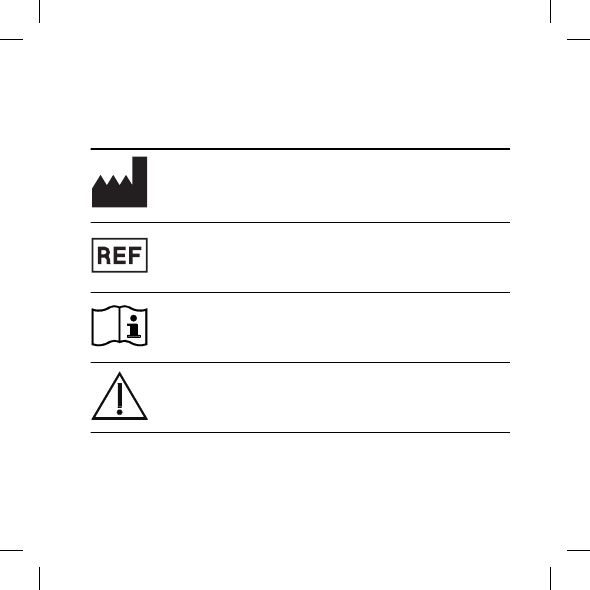
SYMBOLS
Symbols commonly used by Widex A/S in medical device labelling (labels/IFU/
etc.)
Symbol Title/Description
Manufacturer
The product is produced by the manufacturer whose name and
address are stated next to the symbol. If appropriate, the date of
manufacture may also be stated.
Catalog number
The product’s catalog (item) number.
Consult instructions for use
The user instructions contain important cautionary information
(warnings/precautions) and must be read before using the product.
Warning
Text marked with a warning symbol must be read before using the
product.
115
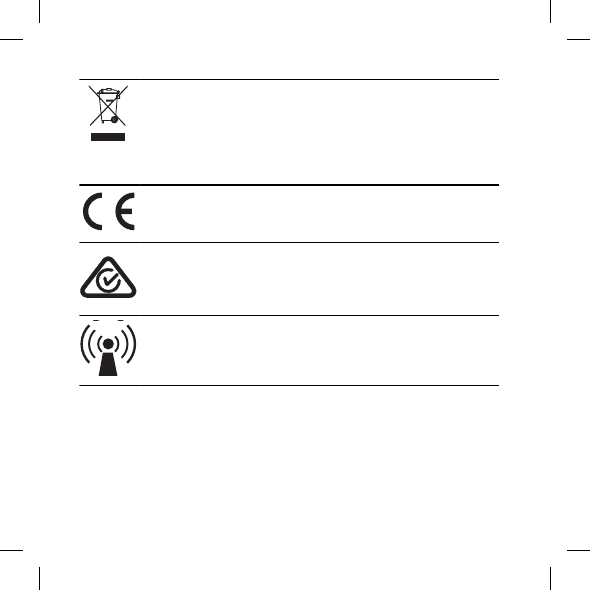
Symbol Title/Description
WEEE mark
“Not for general waste”
When a product is to be discarded, it must be sent to a designated
collection point for recycling and recovering to prevent the risk of
harm to the environment or human health as a result of the presence
of hazardous substances.
CE mark
The product is in conformity with the requirements set out in
European CE marking directives.
RCM mark
The product complies with electrical safety, EMC and radio spectrum
regulatory requirements for products supplied to the Australian or
New Zealand market.
Interference
Electromagnetic interference may occur in the vicinity of the product.
116

117

118

119
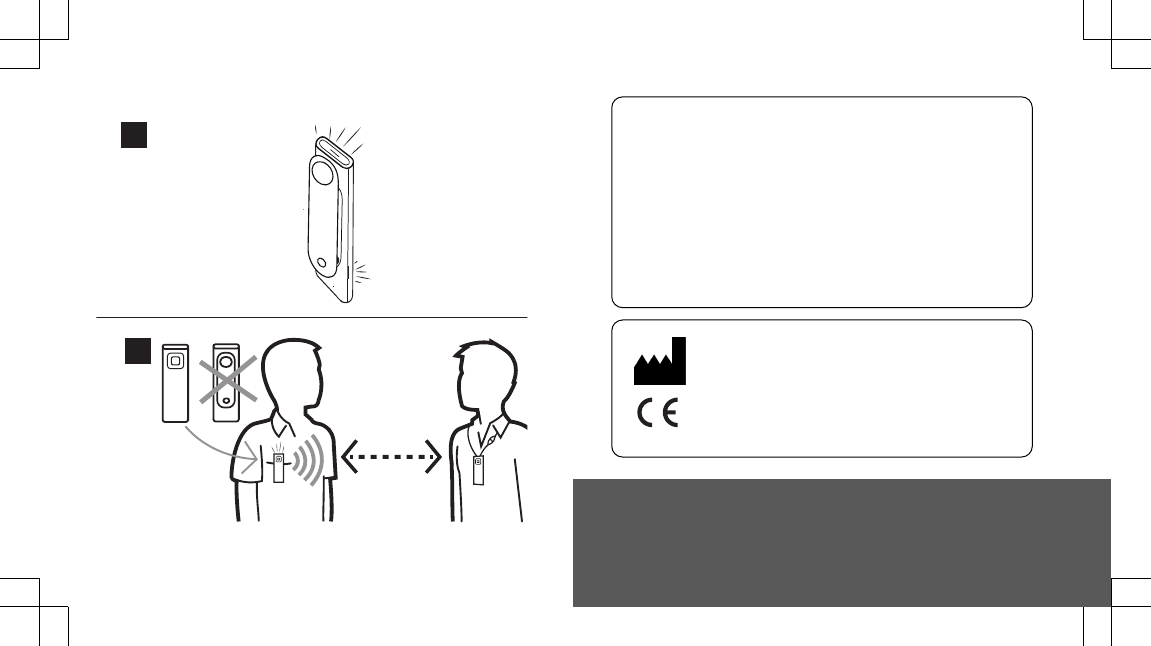
WIDEX A/S Nymoellevej 6, DK-3540 Lynge, Denmark
www.widex.com
Manual no.:
9 514 0380 080 #01
Issue:
2016-07 9 514 0380 080 #01
5
4
10 m. / 30 ft.
COM-DEX Remote Mic COM-DEX